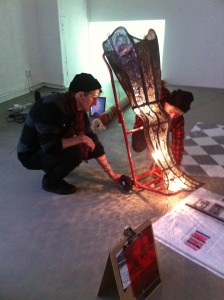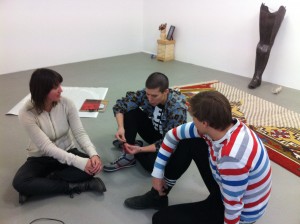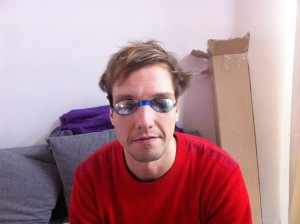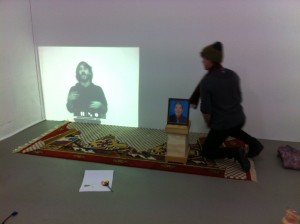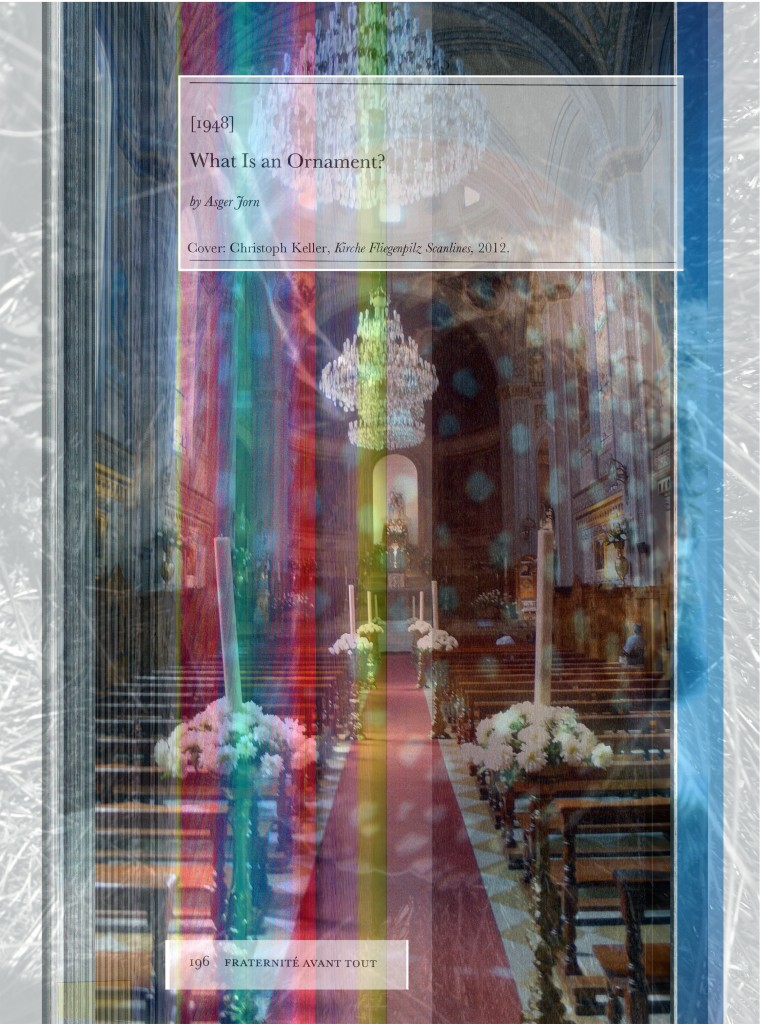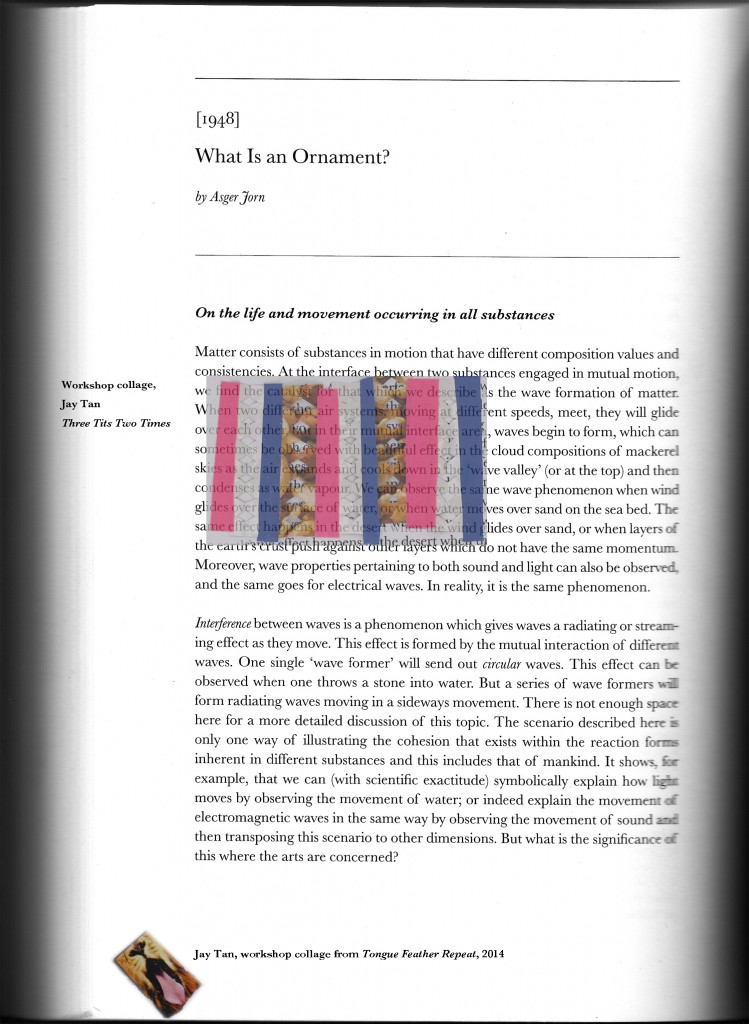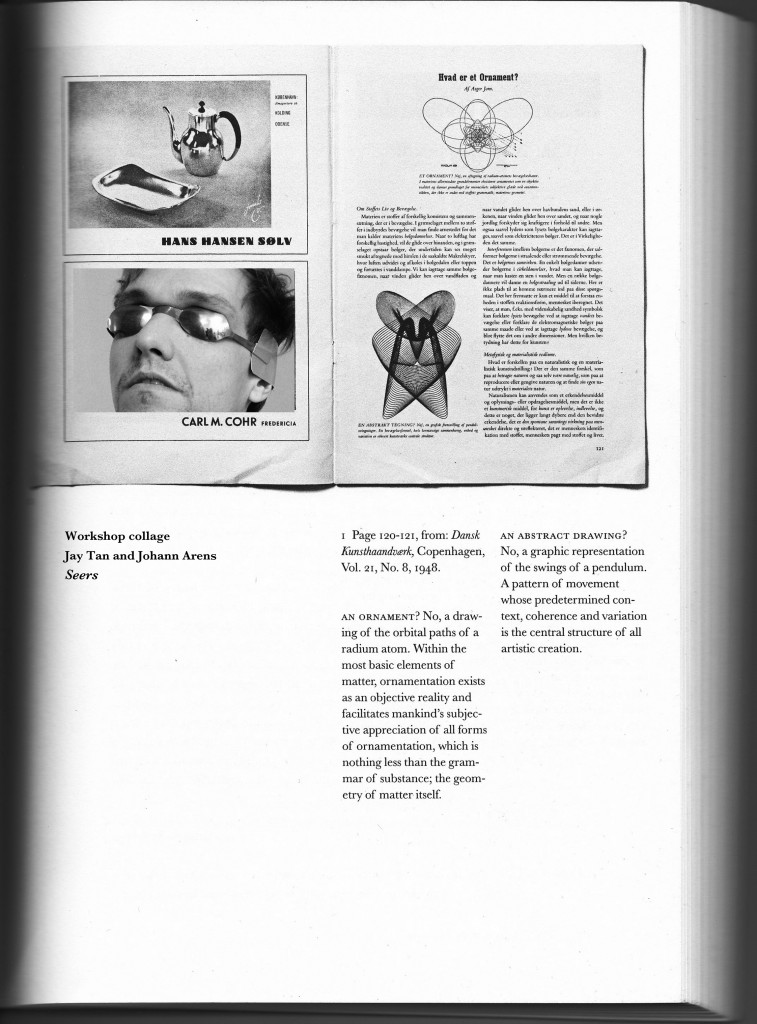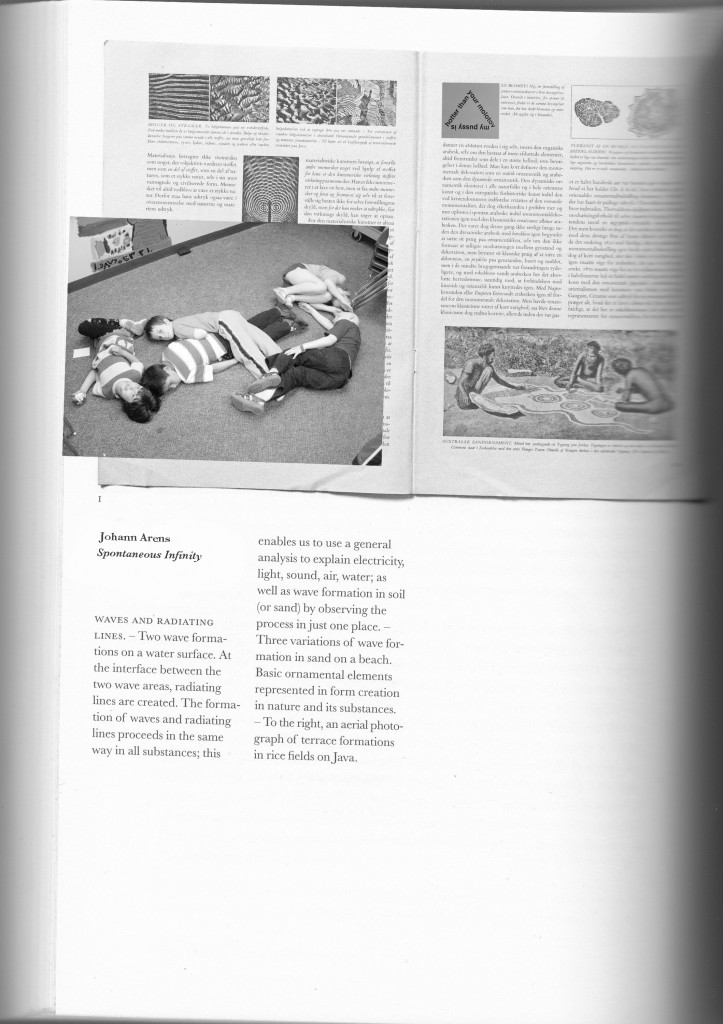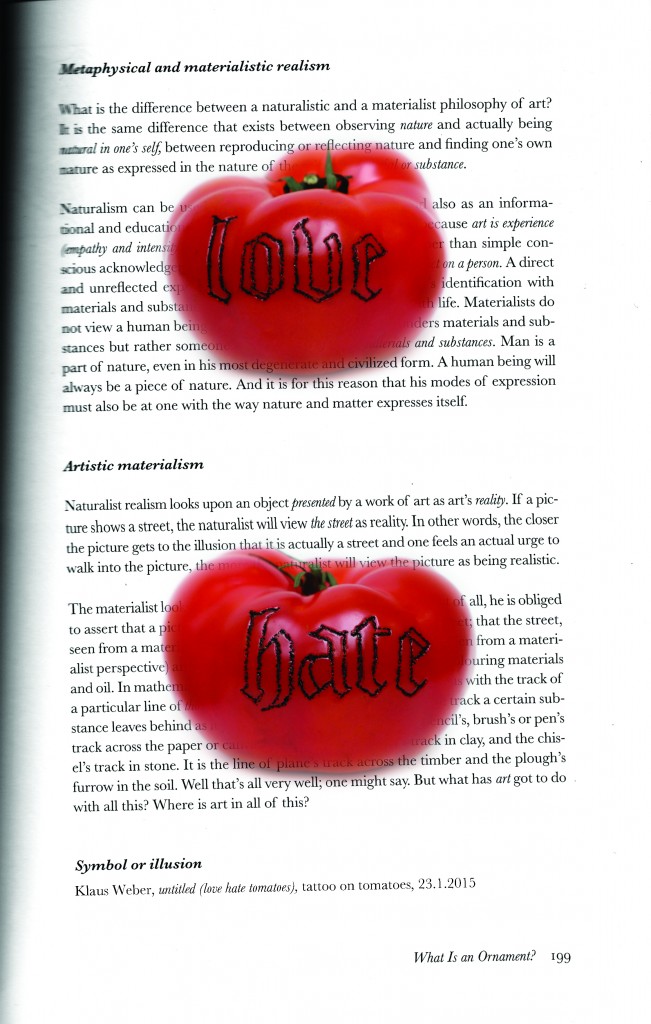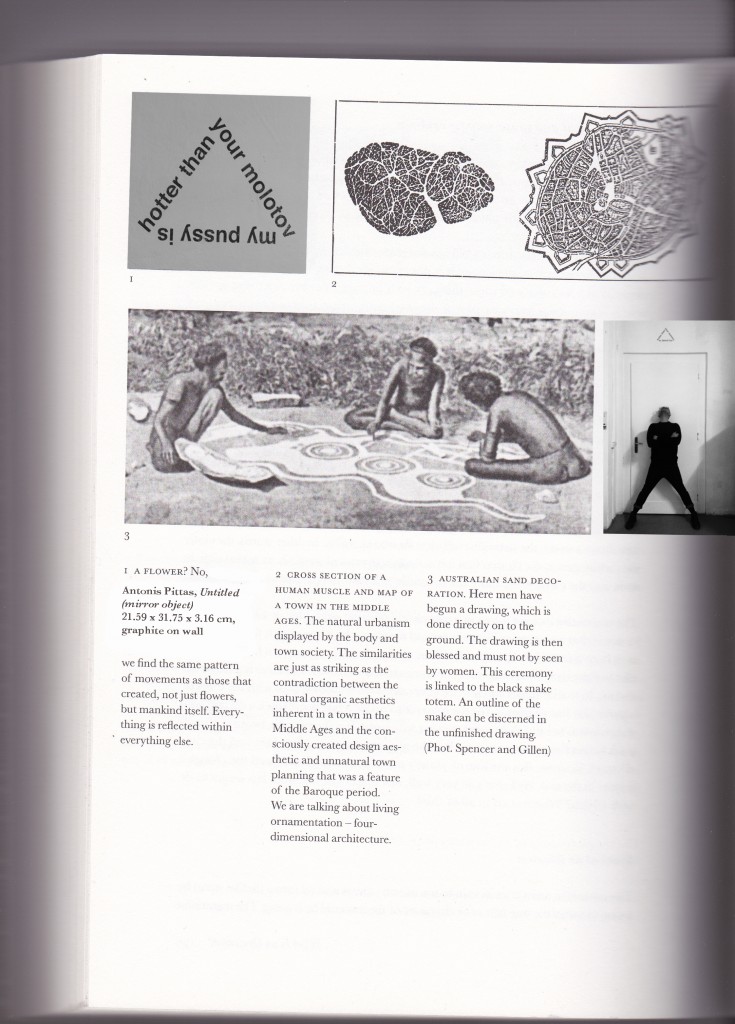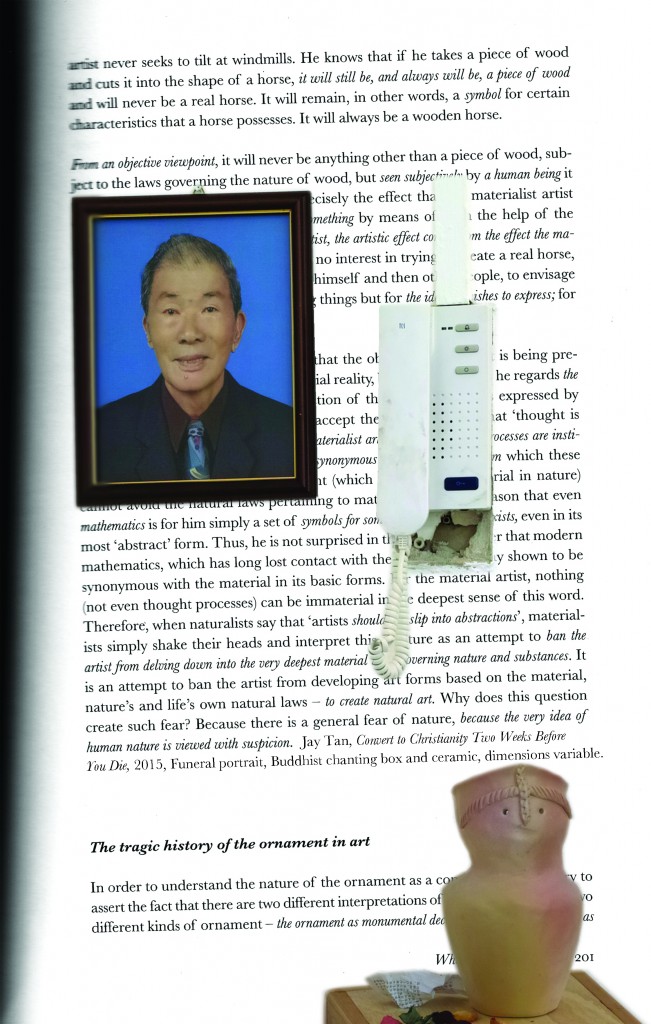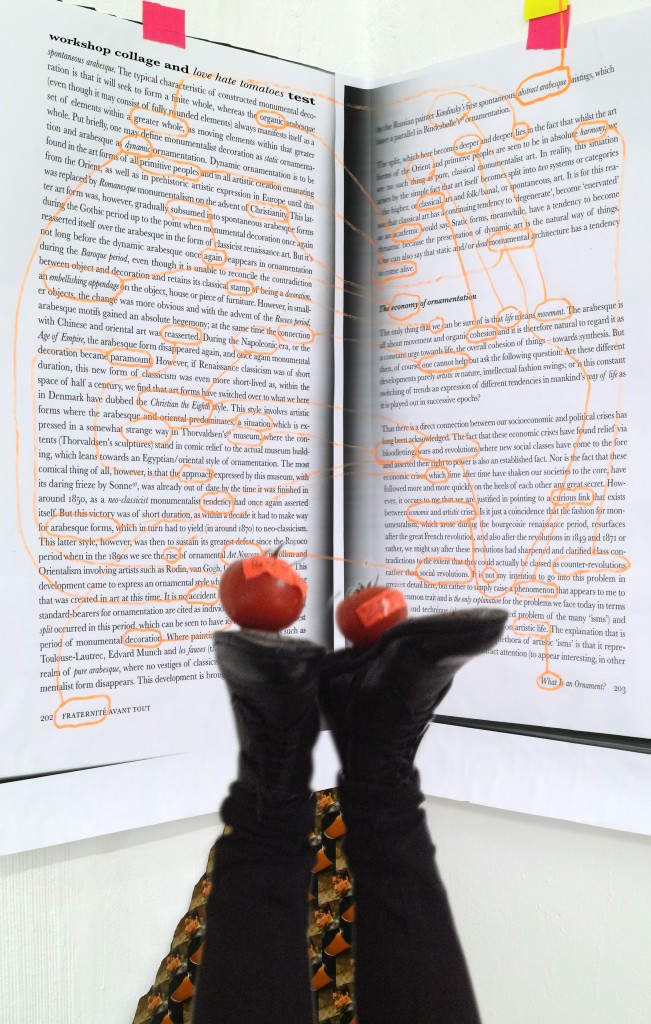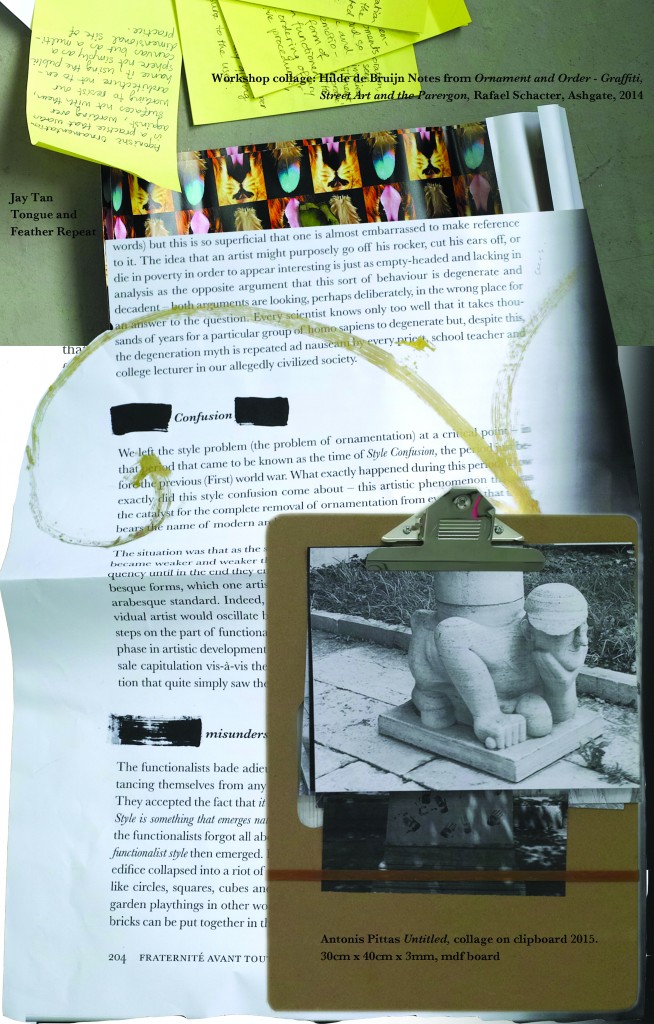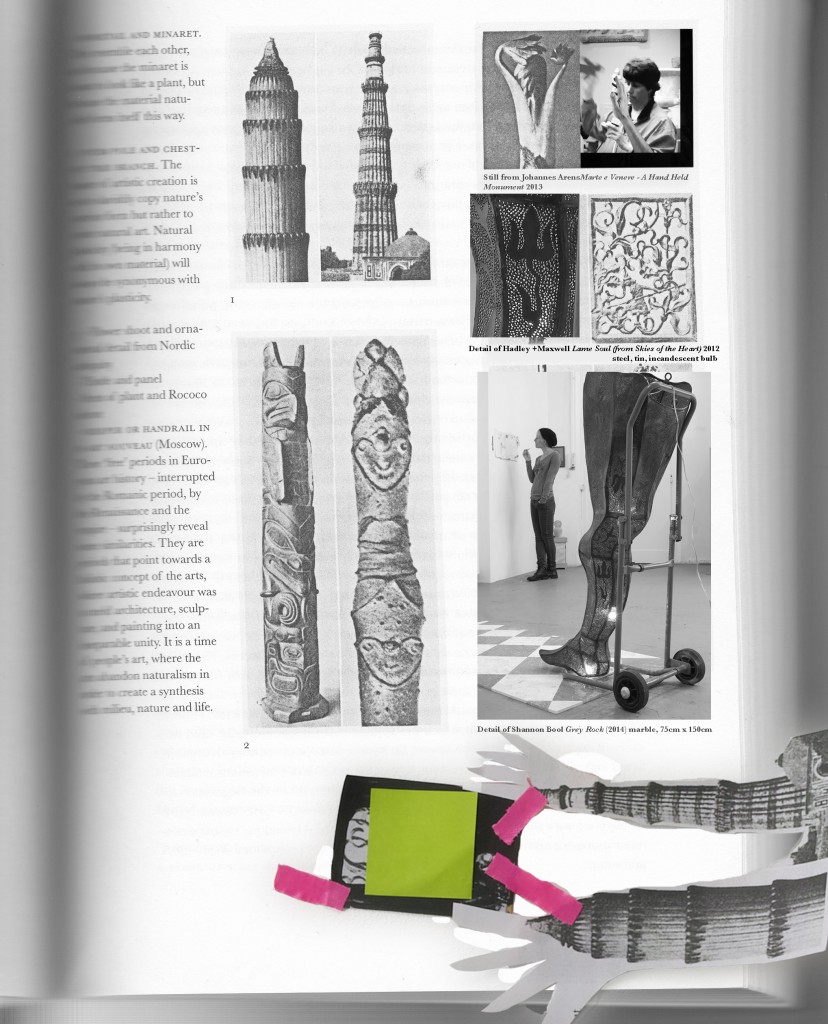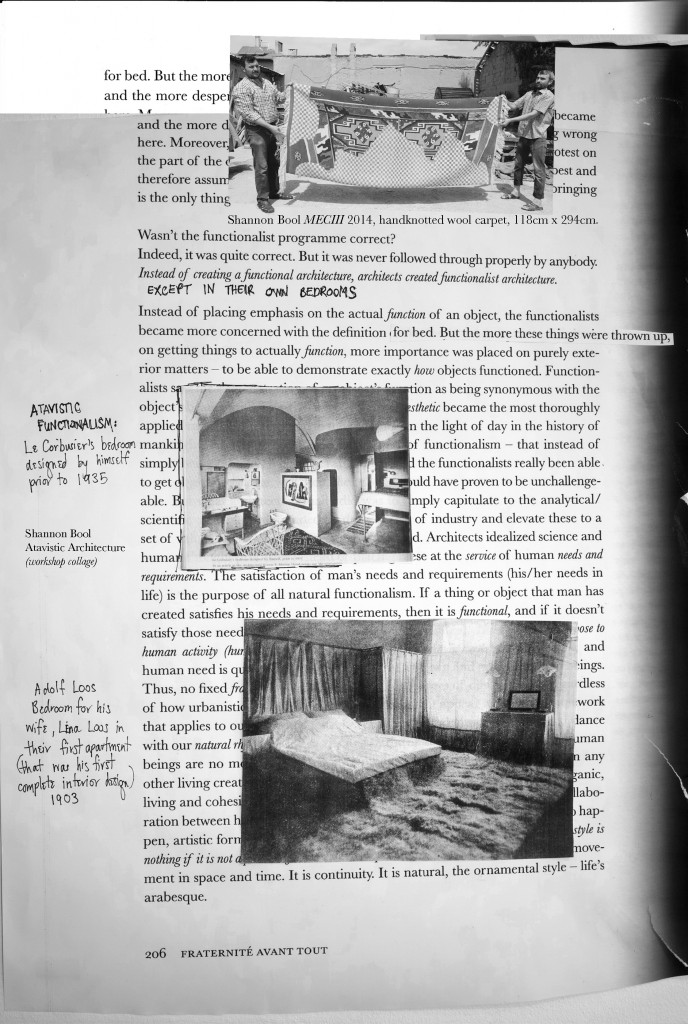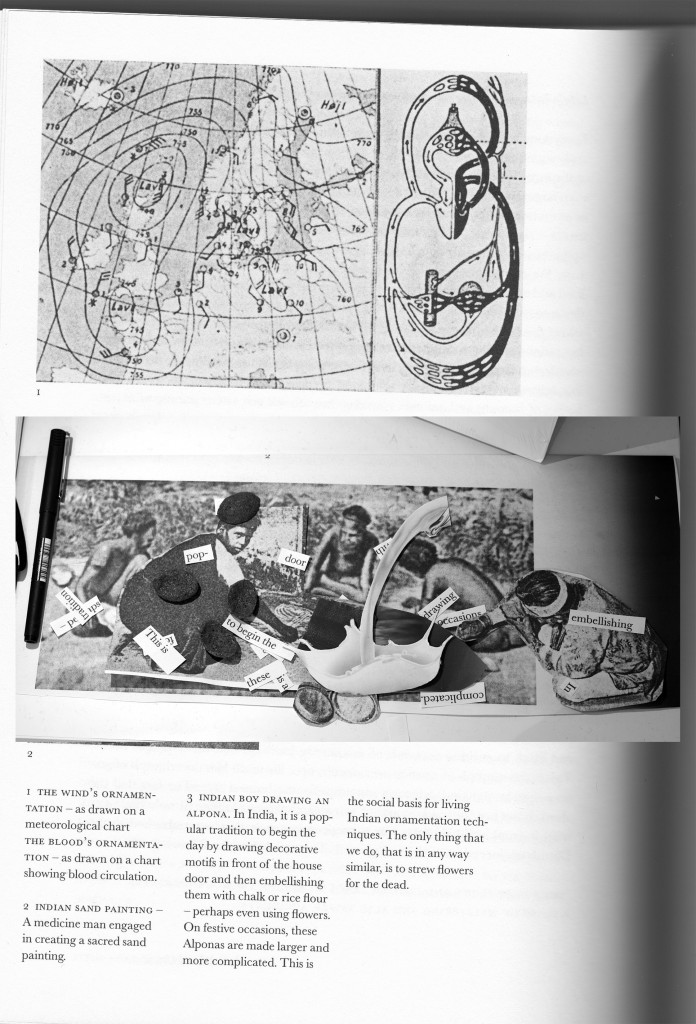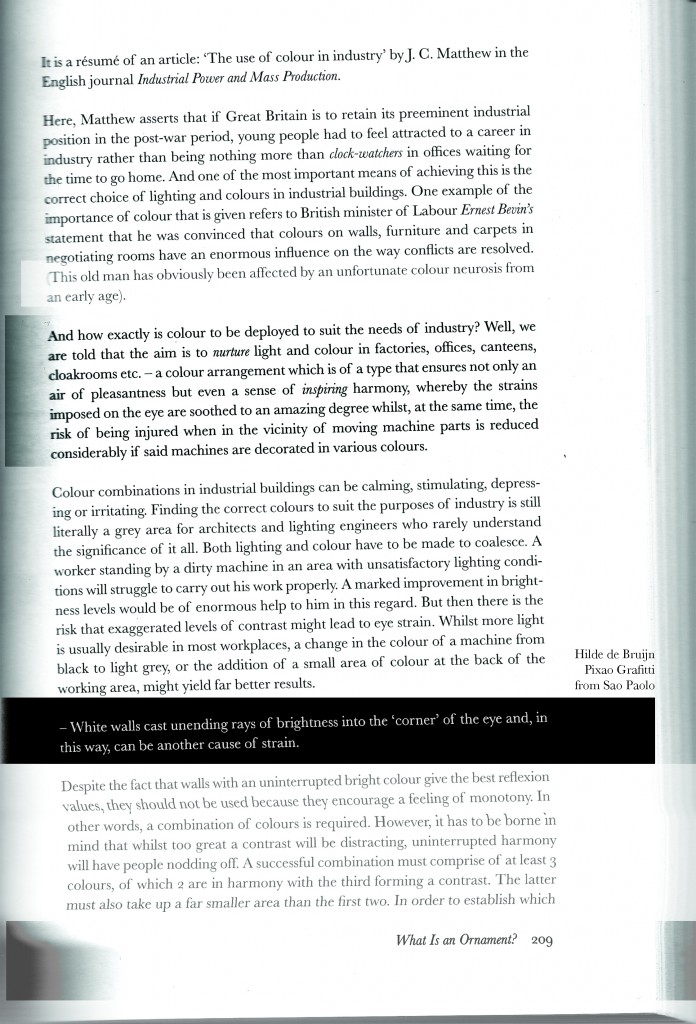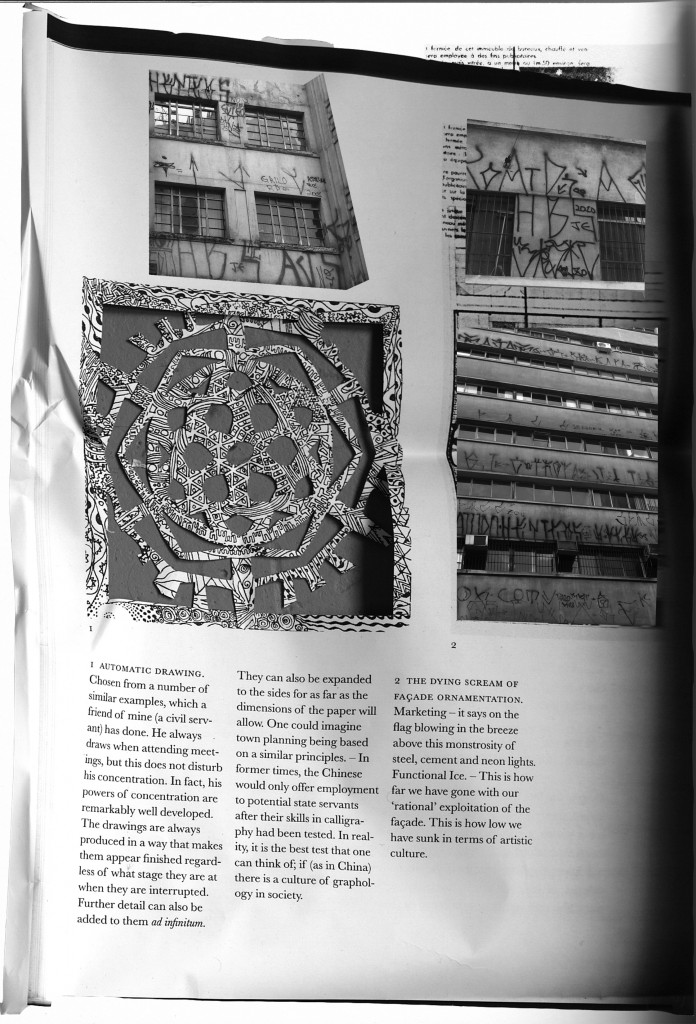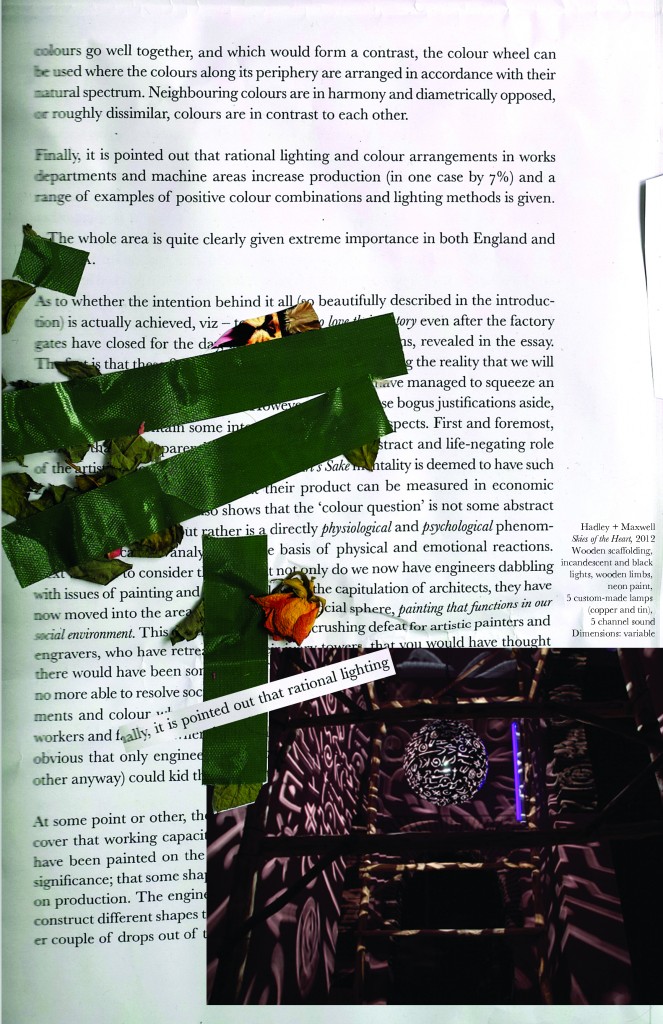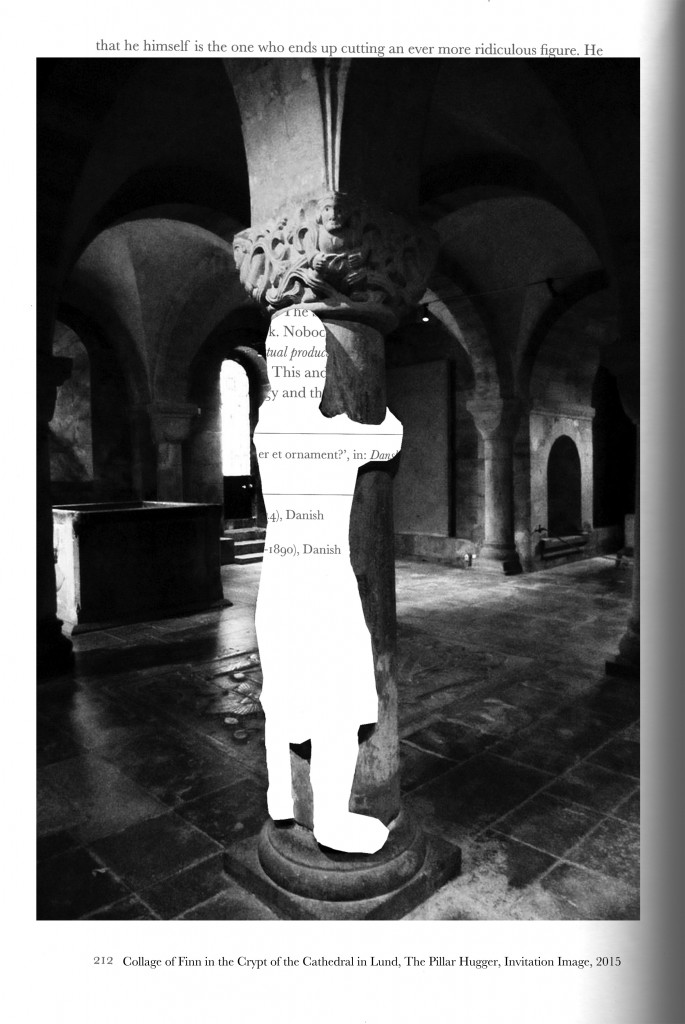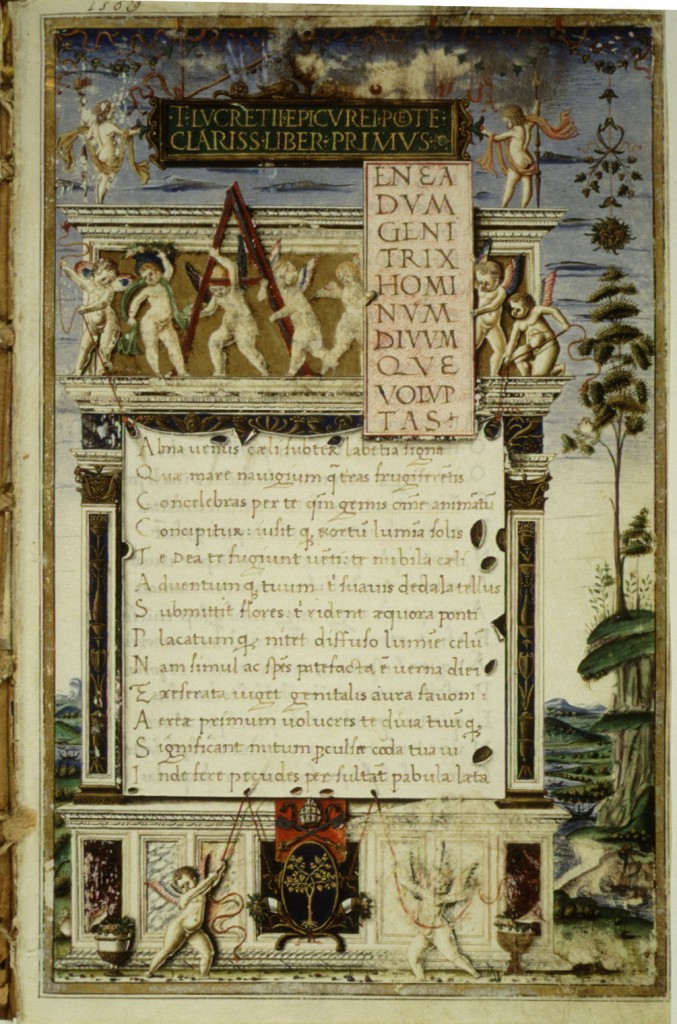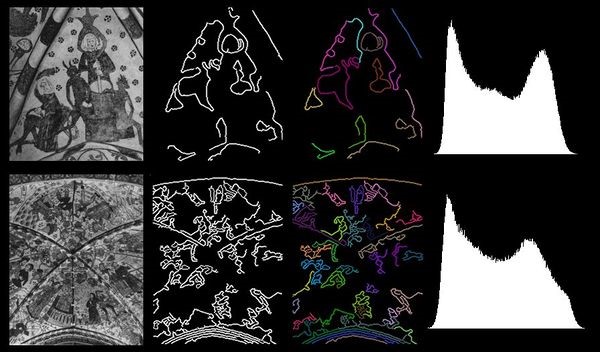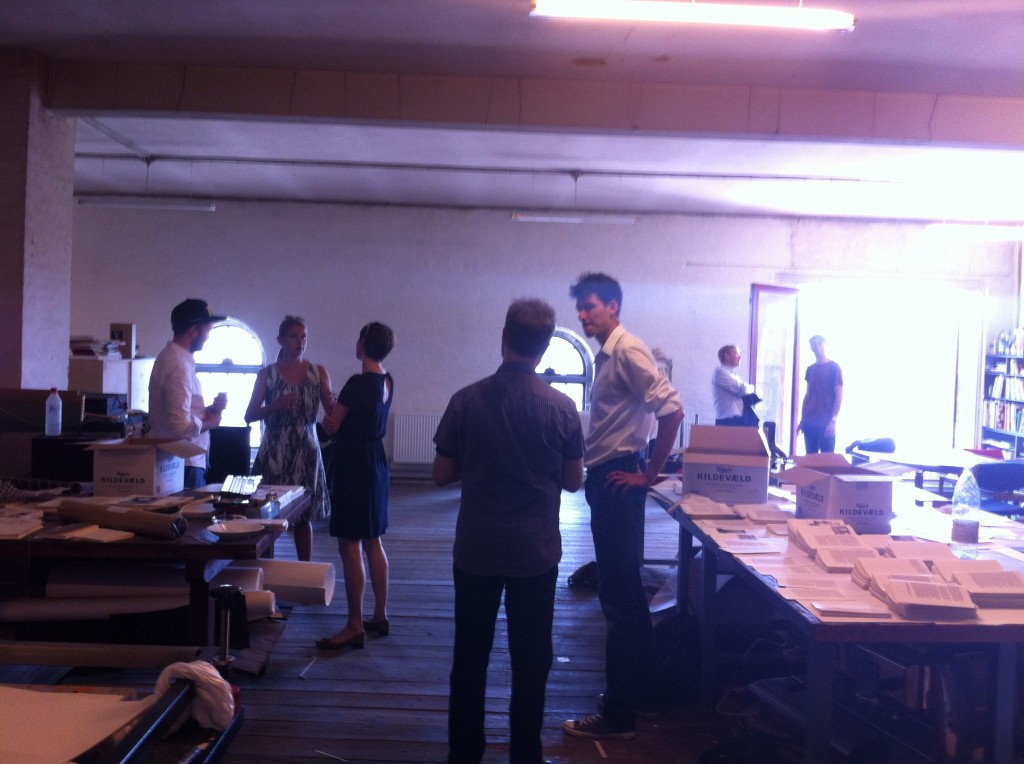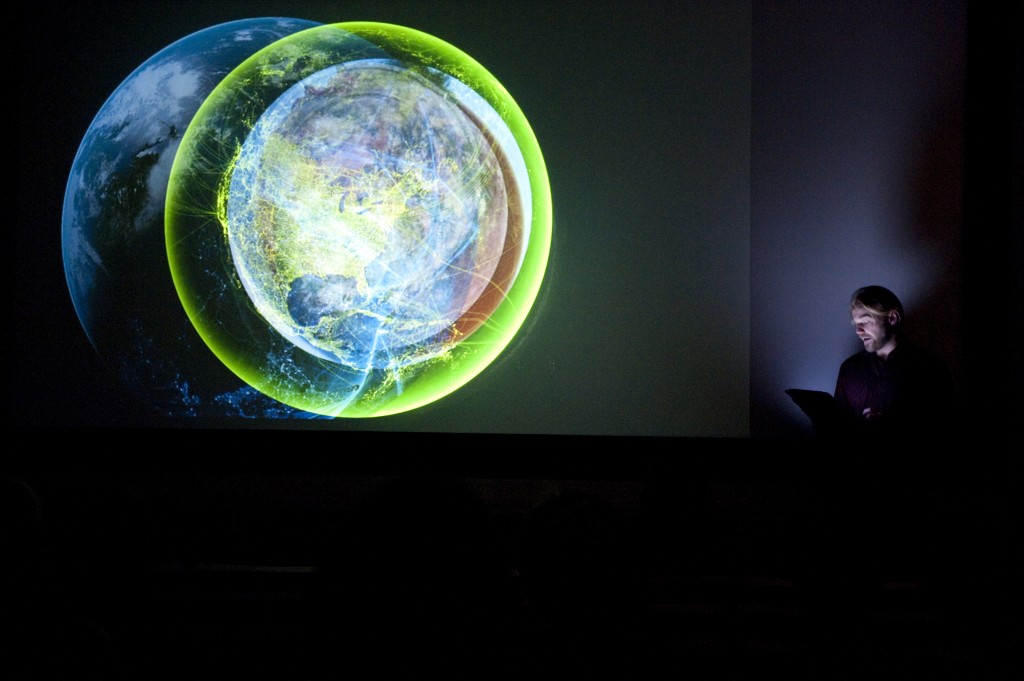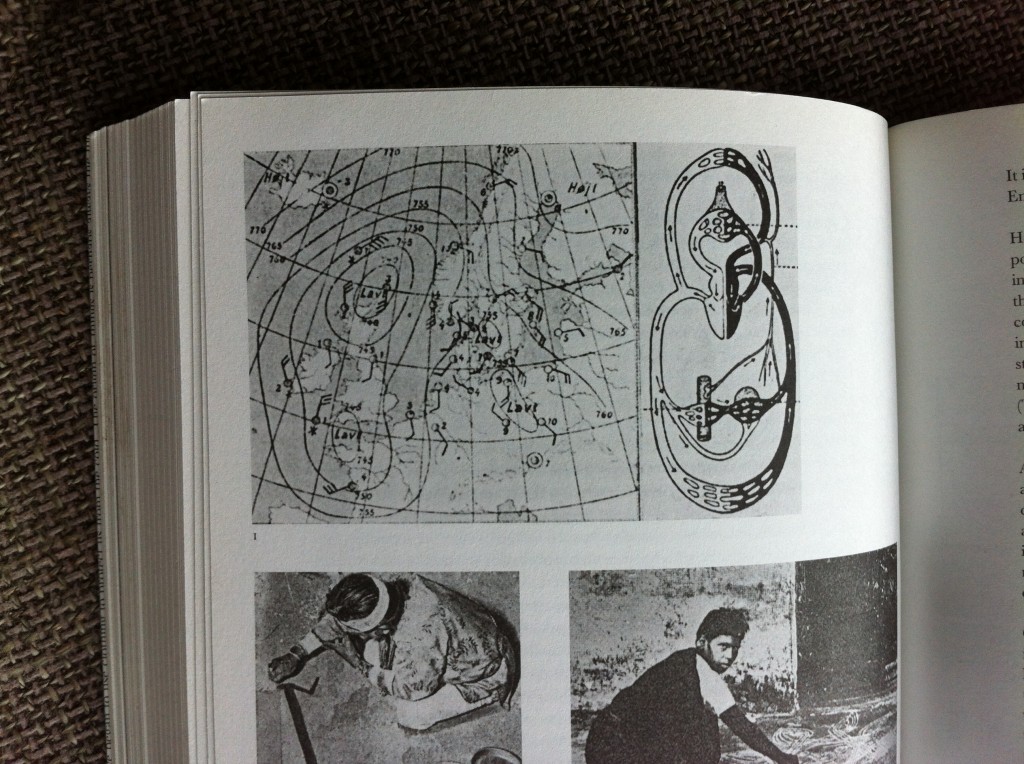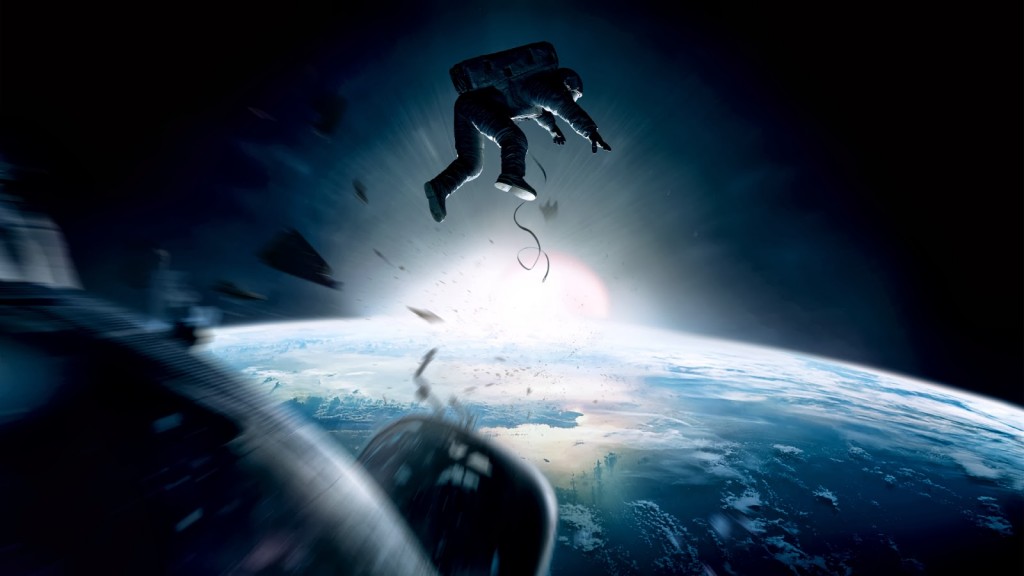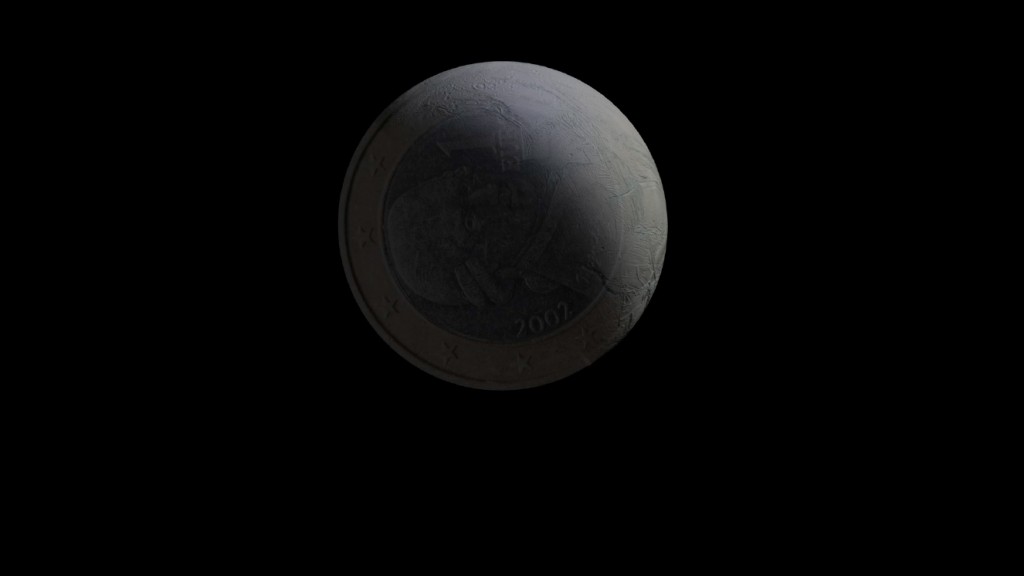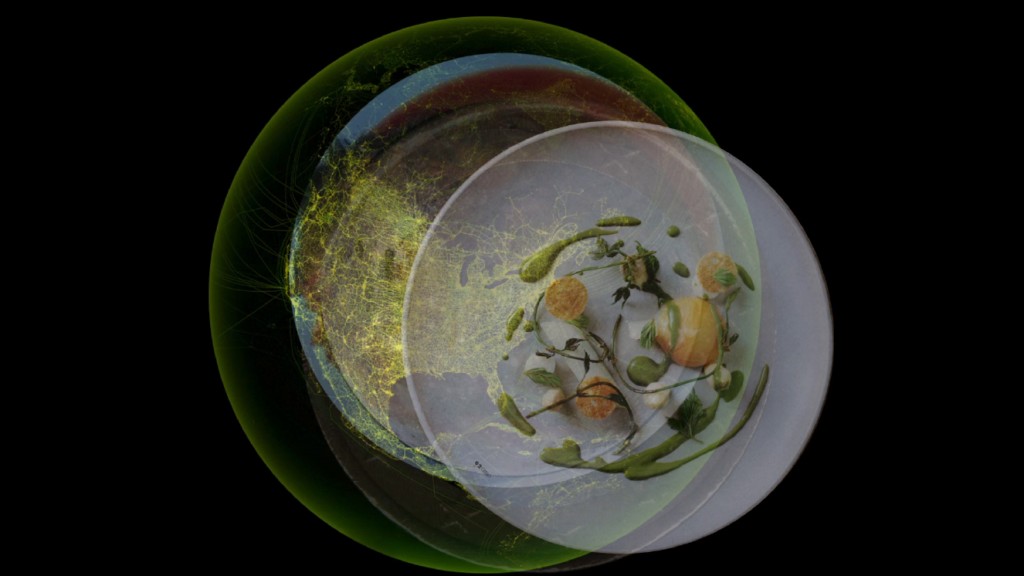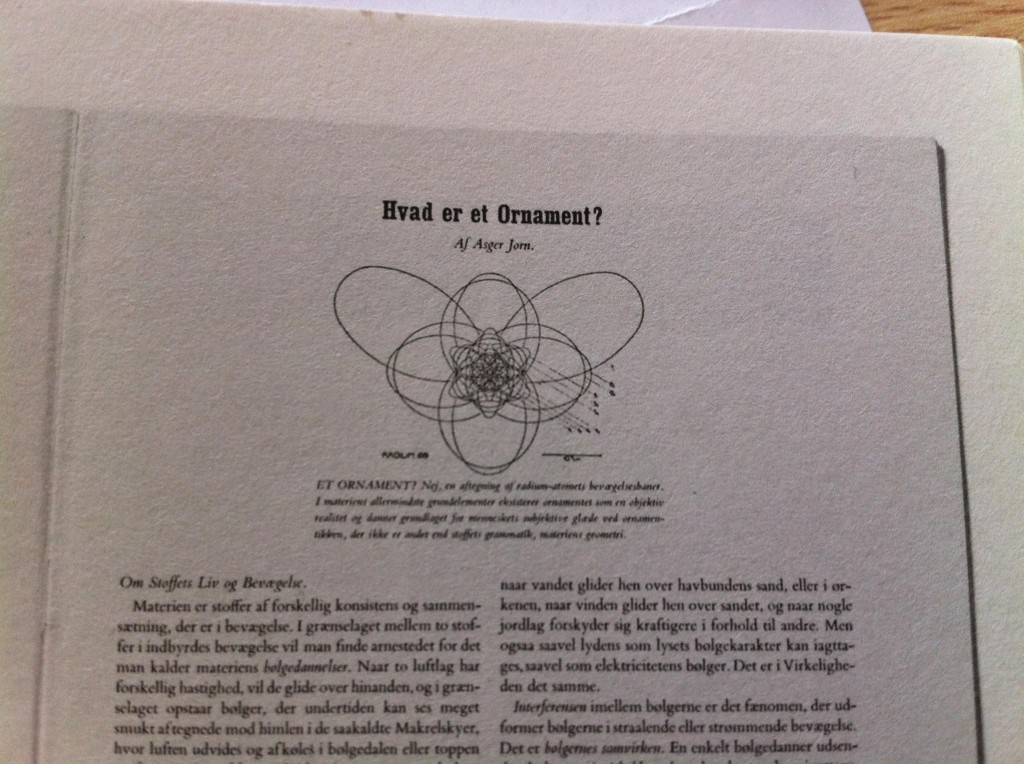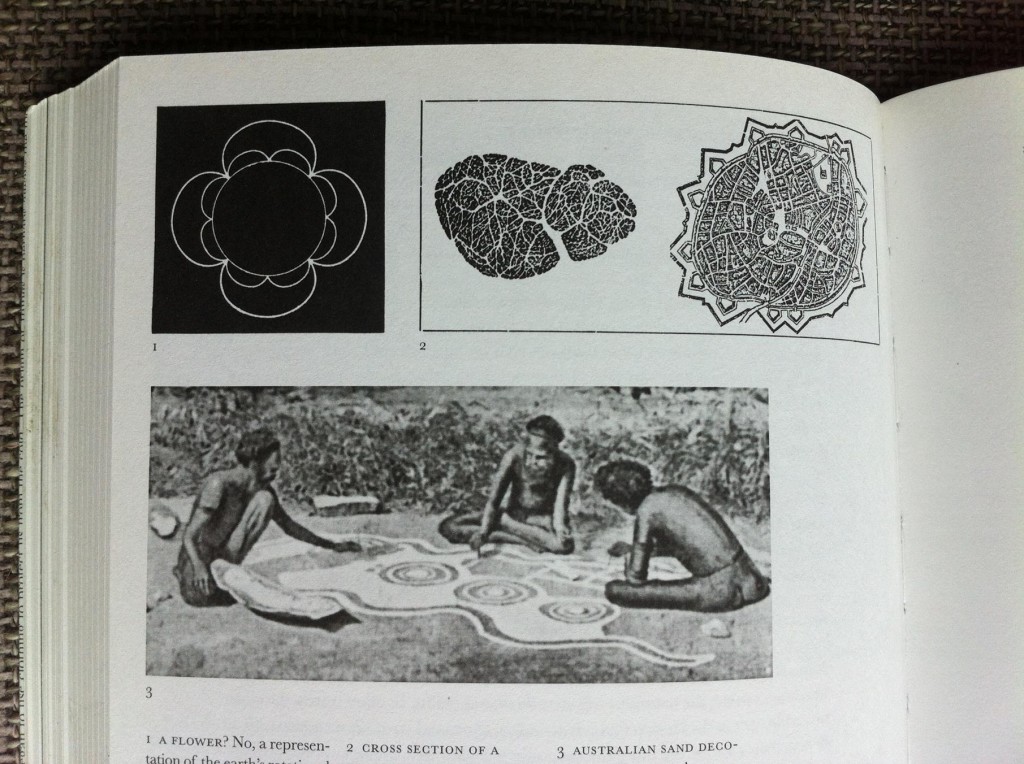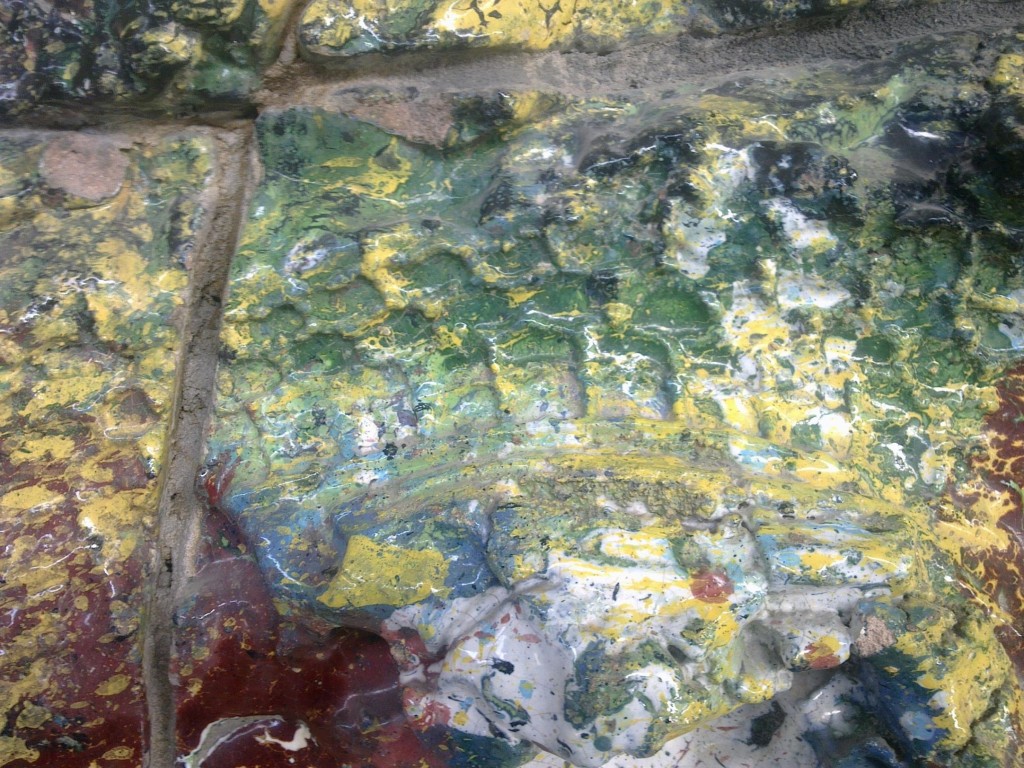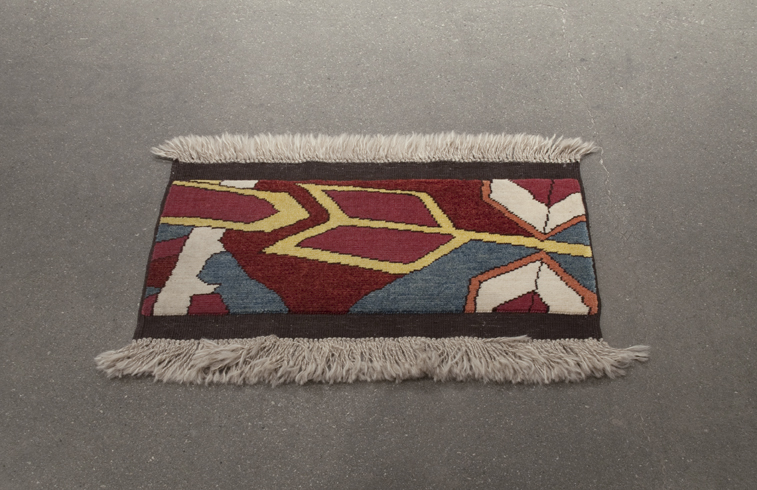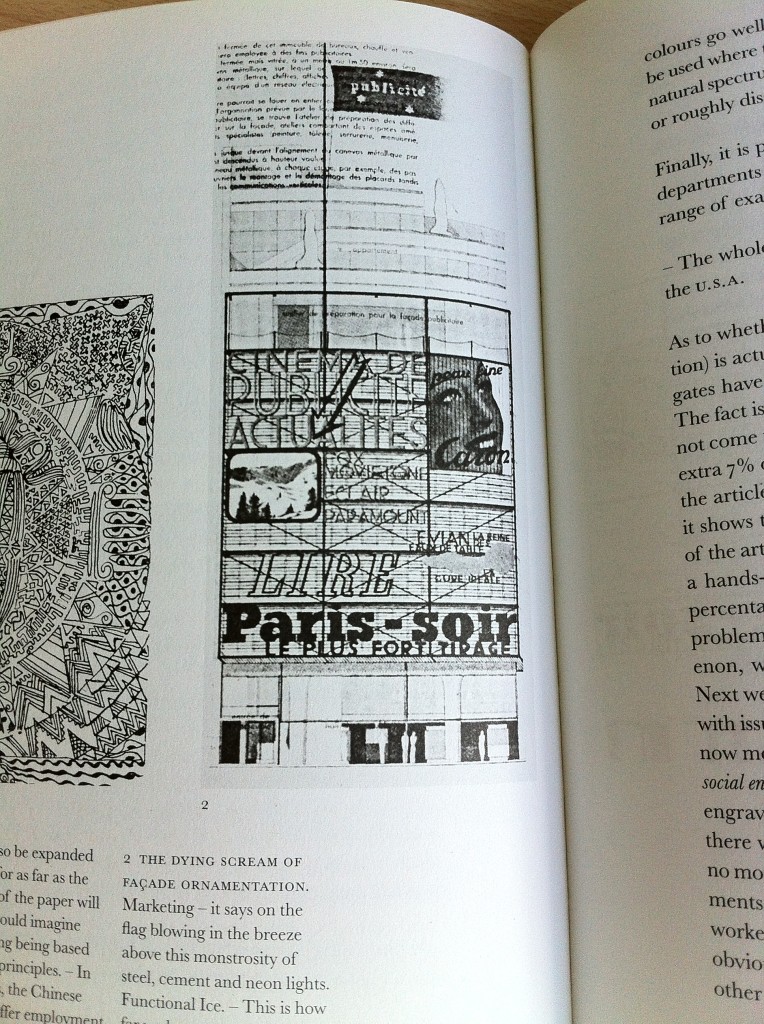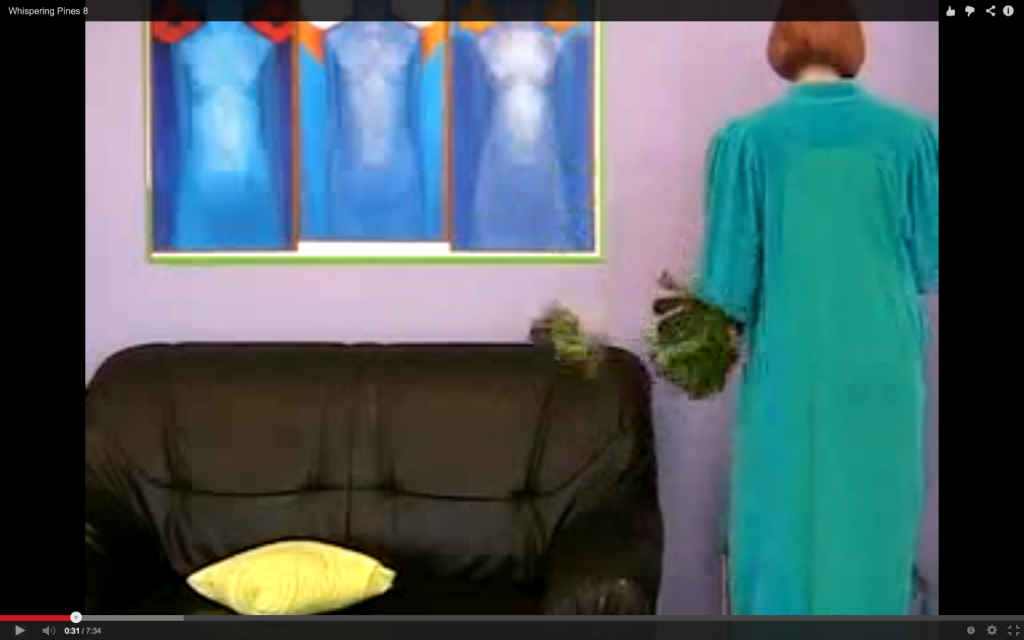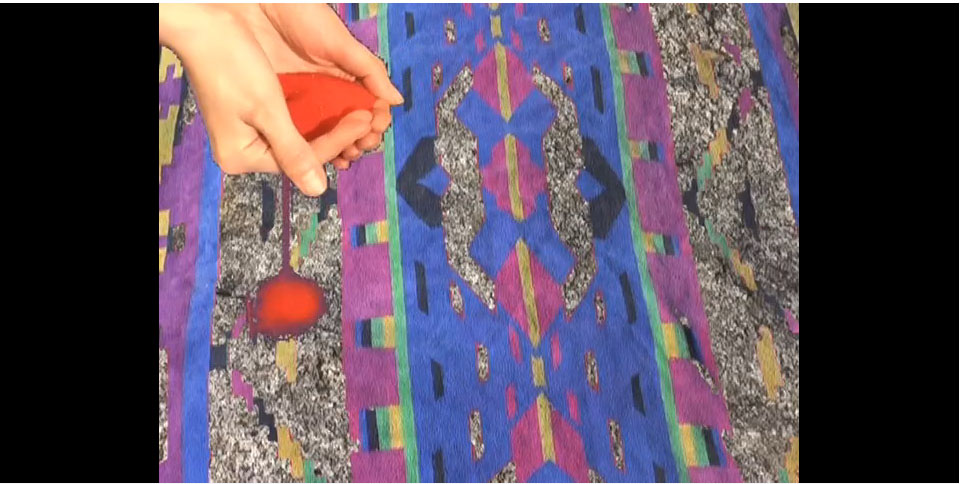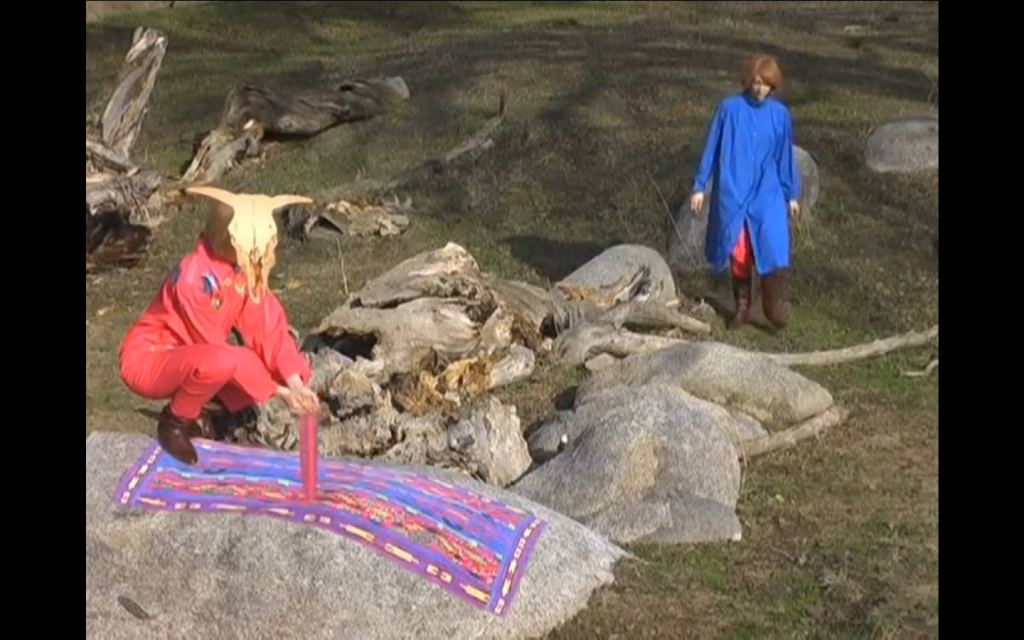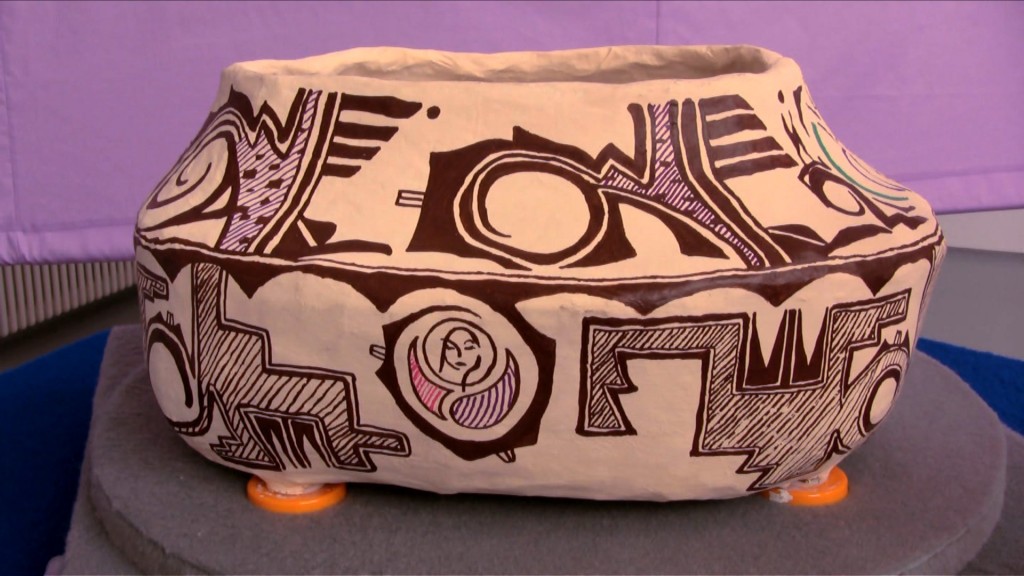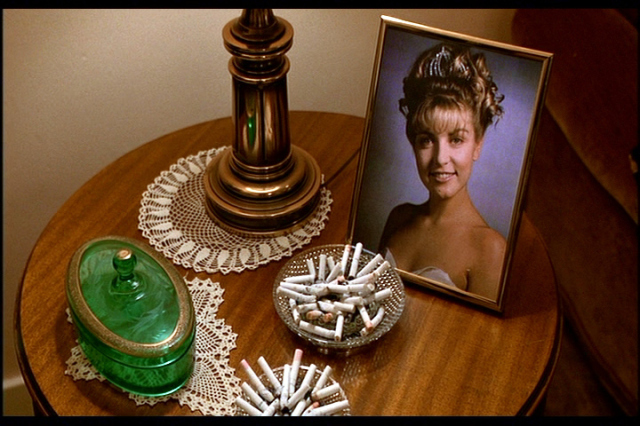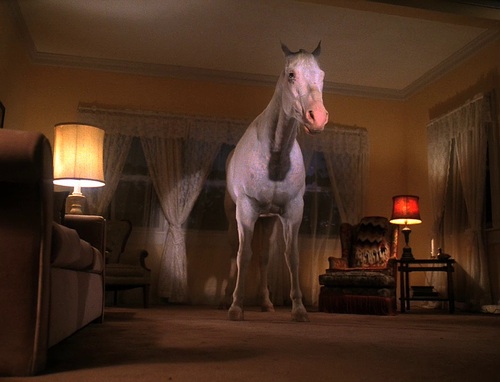YIANNIS ISIDOROU: WHAT ASGER JORN [UN]/TAUGHT ME – A TEXT OF 11 POSITIONS REGARDING THE MOVEMENTS AND TROPES OF THE ARTIST IN THE SYMMETRICAL(IZED) WORLD OF ECONOMY
Within the framework of my research into Asger Jorn´s writing and thinking I organize public and semi-public sessions with special guests at a variety of venues. The guest´s practice, knowledge, insights, or responses are informative to my research, or steer the direction I take on a particular topic. The sessions also often respond to the context of the hosting institution, or to a specific request. Making the sessions public is a way to share and enter into a dialogue with the audiences.
On January 8, 2016 the session ‘Asger Jorn: Thinking in Threes’ was hosted by Circuits and Currents, the Project Space of the Athens School of Fine Art. Two Athens-based artists contributed to this session. Kostis Velonis with the text ‘Alfred Jarry and Asger Jorn: the Epicurean Influence as Social ‘Swerve’ which can be found in the Pataphysics section of this blog, and Yiannis Isidorou with the performance-text below, which consists of a compilation of Jorn citations, partly shifting the original intentions as “to point out some extra risks of today”, to speak with Isidorou.
Yiannis Isidorou’s practice spans a broad range of media including photography, video, sound design and installation. He is co-founder and editor of the Greek e-magazine happyfew.gr on politics, philosophy and art. In 2004 he established Vortex Studio an independent art space and seminar center where he teaches photography and video. His latest project, another co-operation with Yiannis Grigoriadis, called “Salon De Vortex” is a thorough research on democracy, dominance and decay in the post war european society.
1.
Modern science makes us understand the true character of the machine, of rationalization and of standardisation. All of that leads to one thing only: the economy. Economy attempts (is) the symmetricalisation of forces.
Art is to create inequalities.
It is a way of breaking with common taste but also, of reconceptualising it by means of that break, it is a strategy of redescription and re-presentation , a process of hi-jacking. Criticism and affirmation coexist. Imagination, game, awareness, contingency, subversion of the existent.
Every conscious creative act concerns itself with the boundary of self-interestedness and aims at its rapture and containment.
2.
I remain unpredictable at every moment, create the preconditions for surprise and disturbance, I manoeuvre amidst the multitude.
The artist is a chameleon. Lives as the servant of the contingent and the infinite. Bases his cause on nothingness. Moves across the surface, to the margins or even beyond the space defined by consensus, ideology, the common view of things.
Art is not a standard of behaviour but a field of experience.
3.
The reconfiguring of the artist is possible and it is urgent.
What is at stake is a confrontation.
Living art signifies action, it is directly connected to deciding, it negotiates negation, it sets examples and examines multiplicity. The creator’s art is diametrically situated to that of the viewer, the reader etc. Uniqueness, inspiration, scintillation are now the empty signifieds of the dominant spectatorial conception of art. They are the narratives which uphold the ideology of the spectacle. / Art values reality, it is a value investment that reaches as far as the perpetuation of the moment. It renders reality precious in sharp contrast to technique, which disdains it.
The purpose of art is to render human actions valuable, using the means which the current development of the times affords.
4.
I loathe the stock values of the industry: “originality”, innovation, novelty and alongside those, their main instances in the 20th century – work camps, concentration camps and the atomic bomb.
Artistic experiments continue to exist, whereas an experimental field no longer does. That is being endlessly crushed between commercial pusillanimity, resentful controversy and academic hypocrisy.
More and more artists find themselves in an unprecedented impasse and are forced to beg the state for certification, become “prize pupils” and go after distinctions from opportunists the world over, presenting their wares to collectors, institutions, residencies and fairs. Forced to respond to the requirement of constant self-promotion, they regularly make fools of themselves and lose themselves in the neurotic need of acceptance by no-matter-whom.
We thus give away the most precious thing of all – our time.
5.
There is no creative-poetic activation except opposite of society. The social human remains man’s most convincing instance. Despite that / the generality of a social life cannot exceed the tragedy of a private life. Social meaning never does supersede individual’s.
The individual’s enmeshment in the contradictions of the real and its overcoming, reappear as one of the main areas of concern of free artists. A fragmented ‘I’ and a fragmented word may only encounter one another in a way that’s exceedingly contradictory and imponderable. No progress is possible without dire consequences.
6.
Artistic organization is impossible and irrational. Art is anarchy. It is a practice deeply antisocial and it resists organization.
The artist is anti-political. His practice refutes social organization.
It consists in the manifestation and renewal of value differences, hence is sharply at odds with the principle of equality. It attempts increments of progress by experimenting with the discreditation of the existent, without moral prejudice and without defined aims.
What the artist shares with those who are likeminded is the sentiment of rebellion which, however, is changed into a vacant stance (devoid of meaning) when (or as) it evolves into extremism. Every avaunt-guard declaration is finally an eschatology from which we ought distance ourselves, the sooner the better.
Enough already with groundbreaking practices.
The artist seeks the ties that bind the world together. In that regard, he has been abandoned to an apparently useless and futile struggle. Persistence is necessary in order to found a cause on nothingness, on the purely contingent, on the irrational, since wordly forces require a spiritual justification of their power. The ideal of the State.
The activity of the artist in relation to that coercion is the activity of the dexterous burglar-saboteur. He gains an overview of the area, assesses the risk, secures an escape route, works fast, minimizes the duration, blows everything up.
7.
Art is what is discontinuous within the continuity of the world’s narrative. It is an ensemble of incisions and methods whose horizon is the autonomy and freedom of the individual and whose field of development is social becoming.
It is proof of the individual capacity for free action and simultaneously the main means of increasing public nervousness and releasing man’s available energy tensions. Tolerance is the one thing not tolerated in the artistic field.
The construction and projection of a theory of the restrictions, rules, principles or causes for which I create, in short, a narrative of the process of the artistic work, has a soporific effect and, in any case, it lapses into a didactic subterfuge, an educational obstacle on the way to autonomy, to the understanding of social requirements and possibilities of the times. Every promotion of the process ends in pathetic introductions and afterwords.
8.
Availability is the precondition of self-ordained creative activity. Those who have everything to gain and nothing to lose are the artists who are today virtually the only group in the population who retain their total availability unaffected. Several ruses have been enlisted to rescind that availability the outcome is that, even if “artistic production” keeps up, it is void of artistic value.
For the artists who have preserved their free availability and creative capacity, life becomes increasingly dire. One might speak of homelessness. Whoever today chooses or answers the call of free creation, must be prepared in advance for relentless persecution, malignment, pressure and, in the event these do not have the desired effect, lawsuits.
9.
We do not pick our time even if we transform it.
Europe’s cultural production is strictly separated from its society and functions as a central propaganda machine of reality reversal. It is an obscurantism claiming to be an enlightenment. Academia as a movement remains a staunch enemy of art and of the artist. We do not oppose the schools of craft production nor the Fine Arts academies. They are not our concern.
The free artist is a professional amateur. The spirit of amateurism does not signify one is a complete autodidact but, rather, the capacity to overcome one’s knowledge in favor of a new innocence, a new zero starting point or a sense of utter ignorance. Art never provides values but consists in the power necessary to affect and release the ones existing. That is to say, it is a destroyer of human quality and integrity and it is this destruction of perfect integrity that is experienced as beauty. The secret of art consists in the simple fact that it is more beatific to give than to receive but this beatitude hinges on a voluntary offer, on the sense that the offering is considered to be surplus, an abundance and is not motivated by a sense of duty. Art destroys, subverts, liberates.
Oblivion remains our foremost passion.
10.
Only changes attract people’s attention. Creating changes is what is called a game or a variation. To establish a field that operates on the principle of necessity is to annul the possibility of a game or of variations within it.
The game may be considered the foundation of what we call fine arts and this is due to the attraction exercised by the risks to which we are exposed in the course of the game, an attraction requiring an optimal concentration of skill to attain optimal performance.
Only through high stakes may optimal performances derive.
11.
Loneliness is lying in wait for the artist.
During the game, during the concentration of individual skills there are many dangers. The “game” is a closed off narrative.
By contrast to the vastness of the real, it starts, it ends, it has rules.
Life goes on.

In 1964, Asger Jorn was awarded a Guggenheim Award including a generous cash prize, by an international jury assembled by Lawrence Alloway. The following day Jorn sent this telegram to the president of the Guggenheim, Harry F. Guggenheim : GO TO HELL BASTARD—STOP—REFUSE PRIZE—STOP—NEVER ASKED FOR IT—STOP—AGAINST ALL DECENCY MIX ARTIST AGAINST HIS WILL IN YOUR PUBLICITY—STOP—I WANT PUBLIC CONFIRMATION NOT TO HAVE PARTICIPATED IN YOUR RIDICULOUS GAME.
KLARA LIDÉN, PILLAR HUGGER
In 2012, when I applied for a so-called mediators grant to support a curatorial research into Jorn’s writing and thinking I played around with the idea to look at the work of the Swedish-born contemporary artist Klara Lidén (1979) through the lens of Asger Jorn’s ideas on vandalism. Now, 4 years later, Zoë Gray, Senior Curator at the centre for contemporary arts Wiels, in Brussels, gave me the incentive to finally do so for a lecture in the framework of the exhibition Klara Lidén: Battement battu (29.10.2015 – 10.01.2016). The text is a slight adaption of the lecture that I held on January 6th, 2016 at Wiels. I would like to thank Zoë Gray, and I would also like to thank a range of art historians and other Asger Jorn specialists whose perspectives have been highly informative to this lecture including Ruth Baumeister, Helle Brøns, Niels Hendriksen, Karen Kurczynski, and Peter Shield.
Asger Jorn
Let me introduce the first one of the protagonists of this lecture in more detail: the Danish experimental artist and thinker Asger Jorn (1914-1973) was one of the founding members of the Danish Høst group (1934-1950) and the associated magazine Helhesten which he founded (1941–44); the international experimental Cobra group (1948-1951); the Movement International for an Imaginist Bauhaus (1953); and the Situationist International with among others Guy Debord (or SI, 1957–1972), and the Scandinavian Institute of Comparative Vandalism (1961-1965).
To Jorn’s own way to go about we could certainly attribute ‘vandalistic’ tendencies: he would cut out images, scribble or underline passages in his own books (as well as in the books of others), he would buy bourgeois, academic style Sunday school paintings at the flea market and alter them, he would for several years in a row go back to the house of the collector of his largest painting to continue altering the painting because the buyer had made a comment about the work perhaps ‘still missing something’, he would run a scooter over a large clay relief leaving the tire track visible in the end result, and he would tear down tick layers of posters in the streets of Paris to ‘décollage’ them.
Even the way that Jorn used photography in for instance his book Signes gravés sur les églises de l’Eure et du Calvados (1964, on mediaeval graffiti on churches in France) has been labelled ‘vandalistic’ for the continuous disconnection of the photographs from historical chronology in favour of a purely visual order (Niels Hendriksen).
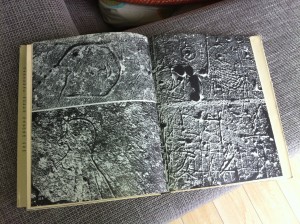
Asger Jorn, Signes gravés sur les églises de l’Eure et du Calvados, 1964
Klara Lidén
Protagonist number two is the Swedish artist Klara Lidén (1979) who lives and works between Berlin and New York. Lidén works with performance, interventions, video, installation and sculpture. Her main interest is an exploration of the physical, psychological and social limits and conventions of both public and private space; the street as an endless source of inspiration and action; an obsession with recycling and transforming urban materials; physical gesture and use of the body. She has recycled waste packaging into makeshift hideaways, turned old posters into paintings, along with many other kinds of creative vandalism.
Like Asger Jorn’s décollages, Lidén’s Poster Paintings series consists of layers of glued-together advertisement posters taken from the streets, but in contrast to Jorn who reveals so to speak hidden compositions, Lidén’s sole addition is a white top sheet. A series of spray-paint works on paper by Lidén show traces, prints of everyday life items that the artist finds in her studio or among her personal belongings, including her bike. Again an image that reminded me of Jorn, of his clay relief.
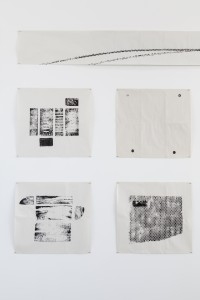
Overview of various works on paper with spray paint by Klara Lidén, exhibition detail, Wiels, Brussels, 2015.
Lidén’s photograph Bowery (2012), showing a figure that has climbed on to a street sign at an intersection; and Column Monkey (2013), in which we see how she ascended on the pillar of a deserted building in an urban zone reminded me of images in one of the publications of Jorn’s SISV.
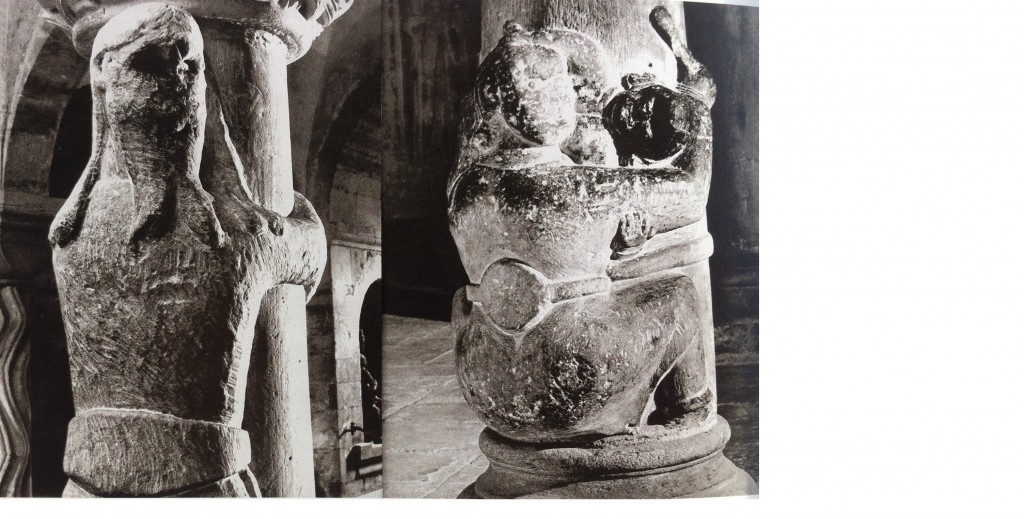
Pillar-breakers or pillar-huggers at Lund Cathedral, photograph by Gerard Franceschi in Jorn’s publication “Skånes stenskulptur under 1100-talet” (12th-Century Stone Sculpture of Scania), 1965.
JORN ON VANDALISM
Not only did Jorn display a ‘vandalistic attitude’ within his own art practice, throughout his writings he also theorized on the concept of vandalism but of course, the concept is part of a web of other notions, and I decided to simply take a few of these as a starting point for further analysis and speculation.
Value
In relation to the notion of value I would first like to bring up the vocabulary of the Situationist International, which happens to be frequently mentioned in relation to Klara Lidén’s work – especially the notion of détournement. Détournement is usually translated into English as ‘diversion’. An English translation of the Situationist publication Détournement as negation and prelude[1] (originally published in French in 1959) says: “Détournement, the reuse of preexisting (artistic) elements in a new ensemble, has been a constantly present tendency of the contemporary avant-garde, both before and since the formation of the SI. The two fundamental laws of détournement are the loss of importance of each detourned autonomous element — which may go so far as to completely lose its original sense — and at the same time the organization of another meaningful ensemble that confers on each element its new scope and effect.”
Artistic examples of detourned expression include Jorn’s previously mentioned modifications, his altered Sunday school paintings. As Karen Kurczynski writes in The Art and Politics of Asger Jorn, with these kind of works “Jorn expressed an overt critique of the social exclusivity of high art from classicism to modernism and beyond.”
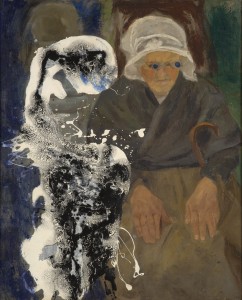
Asger Jorn, Modification with Brittany Woman, 1962. Collection Cobra Museum of Modern Art, long-term loan by Karel van Stuijvenberg,
On the occasion of an exhibition of these type of paintings, Jorn wrote: “In this exhibition I erect a monument in honor of bad painting. Personally, I like it better than good painting. But above all, this monument is indispensable, both for me and for everyone else. It is painting sacrificed. This sort of offering can be done gently the way doctors do it when they kill their patients with new medicines that they want to try out. It can also be done in barbaric fashion, in public and with splendour. This is what I like. I solemnly tip my hat and let the blood of my victims flow while intoning Baudelair’s hymn to beauty.”[2]
But despite this colourful remark, Jorn’s ‘vandalistic’ approach was never aimed at one-dimensional disrespectful destruction. This is also illustrated well by something else Asger Jorn said about his modifications in the same text:
Be modern / collectors, museums / if you have old paintings / do not despair / Retain your memories / but detourn them / so that they correspond with your era. / Why reject the old / if one can modernize it / with a few strokes of the brush. / This casts a bit of contemporaneity / on your old culture. / Be up to date / and distinguished / at the same time. / Painting is over/ You might as well finish it off / Detourn (détournez) / Long live painting.
Contemporary art historians tend to think of the modifications as re-valuations, or as “progressive use of tradition”. As Helle Brøns points out Jorn fully recognized that the creation of new values by devalorization is only possible where there is something to de-valorise, i.e. where a recognized value already exists. Brøns: “There is a fundamental difference between Debord’s attitude to the détourned material as something losing its significance, and Jorn’s maintaining – in part – its original value.”[3]
An artistic example of the use of detourned expression in Klara Lidén’s work could be the previously mentioned Poster Painting series. The posters lose their autonomy, and the reorganization by the simple gesture of adding a blank top sheet undermines their presumed message. The title of these works make a general reference to painting, the blank top sheet suggest a particular reference to the tradition of the abstract monochrome in modernism, the ‘upgrading’ of street posters to ‘high art’ could (as was the case with Jorn) be read as an overt critique on the social exclusivity of high art.
Below, I will discuss the next point that is also intertwined with Jorn’s thinking about vandalism but that leads to a pointing at some fundamental differences in Jorn’s and Lidén’s respective practices.
Progress
In Jorn’s texts the complete freedom required to create pure experiment, and the transgression of existing modes of thinking and pre-established norms and ideas, are inextricably linked to the notions of progress (and risk). In his text ‘Charms and Mechanisms – upon the role of vandalism in the history of arts’ (published in French in 1958 in his collection of essays Pour la Forme (the first substantial publication within the Situationist International) Jorn also brings up the example of the testing of new medicine (like with the detourned paintings when he speaks about “the blood of my victims”). He uses this example to illustrate the fundamental idea that risk, the notion of loss (or potential loss) are in fact an intrinsic part of progress. “I wager this clear idea”, Jorn says: “that there will never be any progress without tragic consequences. The gamble with life is the origin and the price of all progress.”[4] In other words: all progress is vandalistic and barbaric.
So what else does Jorn’s perspective on progress entail? In Charms and Mechanisms he states that he believes in progress, but that as an artist he rejects “any ethical interpretation of progress understood as moving towards happiness, justice or whatever.”[5] Jorn’s rejection of this interpretation might have been influenced by the Danish philosopher Kierkegaard, whose writings Jorn was very familiar with, and who belongs to a generation of thinkers who, I quote the Finnish philosopher Georg Henrik von Wright: “in the course of the nineteenth century had clearly distanced themselves from the idea of the myth of progress” and who according to Von Wright were “not necessarily pessimistic but in a sombre mood of self-reflexion and questioning of dominant currents of their time.”
Based on this more critical attitude, Jorn’s take on progress is instead, I quote: “(…) simply the feeling one has when one moves forward, on a train, for example, and sees the countryside disappear in the opposite direction. The feeling of progress implies losing something while gaining something else.”[6] “It is only by change, that is to say by movement, that the notion of time is available to us … If there are no events there is obviously no sequence, and consequently no time.”[7] According to Jorn, it is the direct goal of the arts to create these events – it is the speciality of the arts to do so. In his own practice this meant that he always aimed to create what he called “the greatest sensorial significance” by varying and diversifying processes.
Despite his rejection of the idea that progress necessarily implies improvement, one of Jorn’s motivations to write Charms and Mechanisms stems from a concern over the declining power of the human race to evolve. In our struggle for reason, we are abandoning this power, Jorn says, by “giving up all irrational or artistic activity in the sphere of the imagination” – whereas it is exactly this activity that generates new knowledge, artistic knowledge[8] (which Jorn also refers to as “comprehension without recognition”).
The Myth of Progress
Klara Lidén has been preoccupied with the notion of progress as well, as is illustrated in the titles of some of her works and the title for her solo exhibition, at the Irish Museum of Modern Art in Dublin in 2014: The Myth of Progress. She took the title from an essay by the aforementioned Finnish philosopher Georg Henrik von Wright (1916 – 2003).
As Jacques Bouveresse points out in his article ‘Wittgenstein, von Wright and the Myth of Progress’[9] Von Wright wasn’t critiquing progress itself, but critiquing the idea that progress is unbounded and everlasting, natural and necessary, and that this type of progress is inscribed in the nature of human beings as a species. Bouveresse quotes Von Wright: “(…) we may seriously wonder whether the idea of unlimited progress, understood in such a way, is not liable to enter into contradiction at some point with the natural species itself, which necessarily implies an environment and living conditions which must also remain, at least to a certain extent, natural, and cannot be transformed in any way we could like and without any limits.”
In contrast, Asger Jorn is aware of the risks that come with progress (its ‘vandalistic’ aspect), but accepts the risk, while maintaining a desire for, or a belief in progress. In his artistic practice this translates into an experimental working method based on bringing about variation and diversification. Large parts of his artistic output, consist of taking existing elements and altering them, resulting in a new objects that now say something else. Think of his modifications, or of his décollages.
In comparison Klara Lidén, who we could argue lives in a world that starts showing the actual consequences of unlimited progress, seems to add just the minimum to a world already overloaded. There is a stronger focus on conceptual, minimal gestures such as with the stacked pieces of asphalt, or with the Poster Paintings: when Klara Liden takes a thick layer of posters from the street and alters it, strictly speaking, she doesn’t add another/her own voice, she rather mutes the original message.
Or, where Lidén leaves a modest bike tire trace on a piece of paper, Jorn leaves behind the noisy tire track of a scooter on the largest clay relief in Europe (27 meter); where Jorn has written hundreds of texts and engaged in public discussions, I can only find a modest amount of interviews by Klara Lidén, and where Jorn co-established various artist groups all trying to raise their voice, always discussing and debating, also amongst themselves, we see Klara Liden on her own, or as a solitary individual even if amongst a group of other people (such as in her well-known video Paralyzed, 2003, in which she does a wild, uninhibited dance on a commuters train in Sweden). In conclusion, I would like to speculate that it is perhaps Jorn’s and Liden’s respective perspectives on the notion of progress are accountable for these kind of differences in their artistic output.
I will now jump to the last notion that is closely related to Jorn’s ideas on vandalism, which is the notion of resistance.
Resistance
From an intellectual point of view Jorn was interested in vandalist expressions as acts of resistance against the reigning order: the graffiti that he found on the churches in France was supposedly made by Viking “vandals”, and the book 12th Century Stone Sculptures of Scania is emblematic for the SISV approach by demonstrating a subtle subversion of the iconography of power. This aforementioned book which includes the image of the pillarhuggers/breakers traces the infiltration of a non-Christian iconography of beard-pullers, double-heads and pillarhuggers in the decorative programs of churches built in the aftermath of the annexation of Scania by the recently converted kingdom of Denmark around the year 1000.
The subversion of existing hierarchies and power relations runs through Jorn’s thinking and practice as a red thread. In Charms and Mechanisms, when Jorn speaks of what distinguishes the artist from “his adversary” he characterizes the artist as the one with conscious opposition to the reigning order in life and places what the calls the “grotesque folly of a too probable existence played out in advance” in direct opposition to the “pure desire for the unexpected, the thirst for surprise, the longing for the absurd, and the attraction of the abnormal, in short, towards diversion, amusement, the ‘dérive’.[10] And a bit further on he writes: “all artistic structurations are just different forms of networks of resistance against movements. (…) all we need to point out here is that artistic currents cannot, as imagined by politicians, serve directly to unify and accelerate general social movement. On the contrary, as counter-currents they are engaged in enriching, diversifying and enlarging the importance of an existing movement by diverting it.”[11]
What speaks from these citations is Jorn’s love for dialogue between a plurality of voices, which is not only part of his thinking, it is also expressed in the collaborations that he was always looking for. To Jorn the dialogue with others, whether harmonious or conflicting, was never supplementary or subsequent, but foundational to his practice and the way he dealt with art as a public phenomenon. Within these collaborations Jorn was fiercely opposed to watered-down consensual results. He believed that consensual strategies needed to be avoided in order for everyone involved to give their very best. The dialogues that Jorn was looking for, were of a more polemic, combative nature. In contemporary terms we could perhaps even speak of Jorn’s attitude as agonistic. “Within agonistic theory disagreement and disputation as deemed necessary, rather than negative components of political and social life”, they are considered “constituents that are at the foundation of an active, vigorous instantiation of citizenship. Within this conception of the public sphere no boundaries or borders can remain unchallenged.”[12]
In conclusion we could say that Jorn, who despite his statement about the rejection of an ethical interpretation of progress, is still driven by the idea that artists and architects could potentially make a difference, testifies of a resistance that is so to speak ‘loud’. In contrast Lidén’s seems a mute resistance, perhaps even totally devoid of risky dreams of a better world. As Helen Molesworth writes in an excellent article in Art Forum when discussing Lidén’s practice: “the artist at work is imaged as silent, sullen, solitary, and quite possibly self-defeating.”[13] Molesworth speaks of a “muted, nearly autistic sensibility” in relation to Lidén. But what does that imply in regards to the notion of resistance, of critique in her practice? Obviously she is not looking to argue, to engage in an active, vigorous instantiation of citizenship ….
Perhaps we should take the term postcritique, a notion that was brought up by Helen Molesworth in the same text, into consideration. The way I understand the term postcritique (though admittedly based on very limited knowledge), suggests that Lidén belongs to a generation that is critical of universal normative principles. A generation that as such is not primarily concerned with these, whereas nevertheless looking for the possibility of critical resistance to moral and social ills. However, as David Couzen Huoy points out in his book Critical Resistance – from Poststructuralism to Postcritique the type of resistance, the in-your-face refusal, exemplified by the famous students uprisings in Paris in May 1968, in which the Situationists International played such a preponderant role (to some extent their political perspective and ideas fueled such crisis), has been replaced by another. The ’68 motto “we are realists, we demand the impossible” nowadays simply means “to resist globalization of capitalism even when one does not have a better alternative to offer” (here Huoy sketches the perspective of Slavoj Zizek).
This perspective might offer an explanation of why Florence Waters in a 2010 review in the Telegraph on Klara Lidén’s solo show at the Serpentine Gallery felt compelled to write that it: “(…) is the knowing futility of Liden’s gestures that separates her from the previous generation of art vandals.” And that, “Unlike her forefathers, Liden’s message is too suffused with irony to be political. She seems, almost, to be poking fun at her predecessors (…) for the naivety of the idea that art would be grand enough to really change anything.”[14] Also Helen Molesworth discusses some of Liden’s works as “the staging of what may be the central dilemma of today’s emerging artist: the futility of being one in the first place.” She writes: “And spending time with her work, one realizes that the twentieth-century paradigm of art’s utopian aspirations is not what’s at stake. Lidén offers blankness—and its aural handmaiden, muteness—less as a critique or a way out than as a condition, less as a program than as a given (reduce, reuse, recycle). In her work, I sense a tacit acknowledgment that the jig is up, that being an artist is just another way of getting by, a coping strategy for living under late capitalism.”[15]
Perhaps this ‘just another way of getting by attitude’ (I’m sure that I’m making it sound more negative then Molesworth intended) is a justified observation. I can see why it would be. I can then also see how this attitude is ground for critique that was expressed in a review in Frieze of a group show in which Lidén was participating. In the article some of her work, as well as that of some other artists, was criticized the following way, I quote, “the pointing towards resistance and subtle undercurrents of violence became the objects of aesthetic contemplation.
This was palpable in Klara Lidén’s series of framed black and white photographic prints, including Untitled (Down) (2011) and Untitled (Monkey) (2010). In these images, a distant person traces alternative routes through the city, up concrete pillars and down manholes. These works did not merely speak of an aesthetic of revolt, but also of the fetishization of resistance.”[16]
But I am having a hard time to buy the ‘just another way of getting by attitude’. Perhaps I simply find it too depressing, but I also guess that there are much much easier ways of getting by then being an artist. And funnily enough, the works criticized in Frieze magazine, are pretty much the same works that led Darran Anderson in a passionate and positive review of Lidén’s solo exhibition at IMMA to conclude that she “demonstrates that we can resist through small imaginative acts of revolt, or at least express our alienation.”[17] Anderson brings up the humorous aspect of the work, as well the notion of danger and risk (public ridicule, attention of authorities, physical harm). And he speaks of how in these works, Lidén’s presence in public space communicates that “any attempt at individuality or real interaction with the surroundings will have stern and immediate consequences”. Crucially, Anderson also adds that “Critically, these are unspoken warnings, existing already in our own heads.”
So what perhaps primarily becomes obvious from Anderson’s observations, is that we are not looking at an artist who is ironic up to the point where the work stops being political, or whose artisthood is just another way of getting by. Lidén belongs to a generation that knows too well (to quote from David Huoy’s book) “that domination and resistance are intimately related to each other, that perception of social constraints is itself produced by social constraints, and thus is just as likely to perpetuate these constraints as to escape them.” What seems to be ‘just another way of getting by’ might in fact be a constant struggle, a way to resist the pitfall of not recognizing that “power and domination may (…) be more complex than it appears on the surface, that the social features that are being resisted may produce the shape that resistance takes.” (Huoy uses the example of a teenager who imagines a world without parents is in fact still presupposing the subject identity teenager and therefore the same social organization that is resented).
In that sense we could think of Lidén’s strategies (the muteness, the solitary acts, the ironic humor, the use of her own body) as highly politically informed strategies all aimed to create “latent and subversive relationships to representation” (as Carl Kostyal expressed it in the same Frieze review on a more positive note on Lidén’s work). I would like to think of Lidén’s repeated performance or embodiment of the pillarhugger/breaker (coming from Sweden she might very well know the mediaeval predecessors in the Lund cathedral) as emblematic for her interest in subversive relationships to representation.
With Column Monkey and similar works, Lidén expresses an interest, like Jorn had, in a transformation of the inorganic to the organic function, challenging the fundamental, static character of architecture. And as Niels Hendriksen points out in his article on Jorn’s Scandinavian Institute of Comparative Vandalism, things and beings that are in a state of transformation inherently hint at subversive relationships to representation, as they hint at cultic metamorphosis, in which value is mutable, where dragons, fish, and other creatures are turned into princes and princesses who in turn become deer, birds, and ghosts. This conflicts with the Judeo-Christian metaphysical world order that stands above nature and matter, and in which (in Christian iconography) the stability of animal symbols serves to perpetuate societal hierarchies.[18] Unlike Asger Jorn though, Klara Lidén is not only interested in investigating the subversive nature of the representation of metamorphosis: by making use of her own body, she becomes the pillarbreaker.
[1] The full text can be found here http://www.bopsecrets.org/SI/3.detourn.htm
[2] Asger Jorn, ‘Detourned Painting’, in: Hvad skovsøen gemte / Jorns Modifikationer & Kirkebys Overmalinger, Museum Jorn, Silkeborg, 2011, p. 132-133.
[3] Helle Brøns, ‘The Shock of the Old’, in: Hvad skovsøen gemte / Jorns Modifikationer & Kirkebys Overmalinger, Museum Jorn, Silkeborg, 2011, p. 136.
[4] Asger Jorn, ‘Charms and Mechanisms – upon the role of vandalism in the history of arts’, in: Concerning Form – an outline for a methodology of the arts, Museum Jorn, Silkeborg, 2012.
[5] ‘Charms and Mechanisms’, p. 107.
[6] ‘Charms and Mechanisms’, p. 107.
[7] ‘Charms and Mechanisms’, p. 108.
[8] ‘Charms and Mechanisms’, p. 109.
[9] Paragraph, volume 34, issue 3, page 301-321, ISSN 0264-8334, Available Online November 2011. The full article can be found here: http://dx.doi.org/10.3366/para.2011.0027
[10] ‘Charms and Mechanisms’, p. 112/113. Dérive is a mode of experimental behaviour connected to the conditions of urban society: a technique (used by the Situationists) of transient passage through various ambiences.
[11] ‘Charms and Mechanisms’, p. 117.
[12] Rafael Schacter, Ornament and Order – Graffiti, Street Art and the Parergon, Ashgate, 2014, p. 95.
[13] Helen Molesworth, ‘In Memory of Static’, in: Artforum, March 2011, p. 217.
[14] The review can be found here: http://www.telegraph.co.uk/culture/art/art-reviews/8056879/Klara-Liden-Serpentine-Gallery-review.html
[15] ‘In Memory of Static’, p. 222.
[16] Carl Kostyál, Awaiting Immanence, in: Frieze, Issue 157, September 2013. The review can be found here: http://www.frieze.com/issue/review/awaiting-immanence/
[17] Darran Anderson, ‘Klara Lidén: The Myth of Progress’, in: Studio International, 18/11/2013. The review can be found here: http://www.studiointernational.com/index.php/klara-liden
[18] Niels Hendriksen, ‘Vandalist Revival: Asger Jorn’s Archeology’, in: Asger Jorn, Restless Rebel, Statens Museum for Kunst, Copenhagen, 2014.
PILLAR HUGGERS – A WORKSHOP AND EXHIBITION AT OR GALLERY, BERLIN
with Antonis Pittas, Johann Arens, Jay Tan, Klaus Weber, Christoph Keller, Hilde de Bruijn, Shannon Bool, Hadley+Maxwell
January 23 – April 18, 2015
Reception Friday, January 23, 7:30PM
Curated by Hilde de Bruijn, Shannon Bool and Hadley+Maxwell
The Danish experimental artist and thinker Asger Jorn (1914-1973), well-known as one of the driving forces of Cobra (1948-1951) and L’Internationale Situationniste (1957-1972) was a fierce collaborator, always looking for international exchange and discussions, facilitating collective work, magazines, and exhibitions. With great drive and ambition Jorn also wrote numerous books and articles envisioning, from an artistic point of view, ‘the first complete revision of the existing philosophical system’. Jorn believed that art is not derived from an ideology or worldview, but is the direct expression of an attitude towards life, belonging to the fundamental level of work and production. In line with this, Jorn combined in his writings ideas from a wide range of disciplines including politics, physics, economics, philosophy, anthropology, structuralism and art theory. He brought these various interests together via unconventional methods and in a vast variety of forms, in search of a comprehensive theory of art and life.
The architectural figure of the pillar-hugger as it appears in Jorn’s 12th Century Stone Sculptures of Scania1 represents a character whose body has become petrified while attempting to tear down a Cathedral by its vertical supports. A small group of artists have been invited to occupy the position of Pillar Huggers for a one-day visual symposium at Or Gallery Berlin where their work will form the material of their conversation. Transposing Jorn’s definition of a materialist attitude toward making art (as he articulates in the essay ‘What is Ornament’ (1948)) to exhibition-making, the artists are asked to animate the position of the body who, through its transformation into the inorganic, becomes the support for the very same edifice it attempts to destroy. How can we reconcile the compulsion to ornament with a resistance to the compulsion to make an exhibition? Can we avoid the exhibition as monumental decoration by approaching the encounter of and between artwork with the spirit of Jorn’s conception of vandalism and the spontaneous arabesque?
The remnants of the workshop opened to the public at 7:30 pm on January 23, 2015, and have also resulted in the visual essay What is Jornament? (published on this blog). The text is taken from the book Fraternité Avant Tout – Asger Jorn’s writings on art and architecture, 1938-1958. Editor: Ruth Baumeister. Translator: Paul Larkin.
Publisher: 010 Publishers.
—————
[1] The book traces the infiltration of a non-Christian iconography of pillar-huggers, beard-pullers, and double-heads in the decorative programs of churches built in the aftermath of pagan Scania by the recently converted kingdom of Denmark around the year 1000.
About the artists:
Klaus Weber is an artist, who lives and works in Berlin, he has shown extensively in both Europe and the United Sates. He conceives works across a variety of media and spatial units, which are often based on multifaceted technological interconnections and intricately organized production processes. Yet, by purposely manipulating everyday structures, the tracing of deviations and the exploration of the impossible, they undermine the metaphorical and actual power of a functionalist rationality. In doing this, Weber repetitively uses images of nature, and explores the sustainable potential of the untamable in a humorous and anarchic manner. Weber has had institutional solo shows at the Fondazione Morra Greco in Naples, the Nottingham Contemporary, the Secession in Vienna, the Hayward Gallery in London, as well as the Kunstverein in Hamburg. The artist has participated in group shows at the MOCA, Los Angeles, the Mori Museum in Tokyo and at the KW Institute for Contemporary Art, Berlin. Weber is represented by Andrew Kreps Gallery in NY and Herald St Gallery in London.
Shannon Bool (1972, Canada) originally from Vancouver Island, she attended Emily Carr University before studying in New York, Frankfurt and moving to Berlin were she lives and works. Solo exhibitions include: The Fourth Wall Through the Third Eye, Galerie Kadel Willborn, Düsseldorf; Walk Like an Etruscan, Daniel Faria Gallery, Toronto (2013); The Inverted Harem II, Bonner Kunstverein (2011); CRAC Alsace, Altkirch, France; The Inverted Harem, GAK-Gesellschaft für Aktuelle Kunst, Bremen (2010); RMIT Project Space, Melbourne, Australia (2008). Group exhibitions include MMK2 Boom She Boom, Works from the MMK Collection, Frankfurt; The Klöntal Triennale, Kunsthaus Glarus, Switzerland (2014); Soft Pictures, Fondazione Sandretto Re Rebaugengo, Turin; Painting Forever!, KW, Berlin; Justina M. Barnicke Gallery, Toronto (2013); the Sprengel Museum, Hannover (2012); 7×14, Kunsthalle Baden-Baden; Tactical Support, Gallery Tracy Williams, New York; Rock Opera, CACP Museum of Contemporary Art, Bordeaux (2009); Drawing on Sculpture: Graphic Interventions on the Photographic Surface, Henry Moore Institute, Leeds (2007); Make Your Move, Projects Arts Centre, Dublin; Spiralen der Erinnerung, Kunstverein in Hamburg; Carbonic Anhydride, Galerie Max Hetzler, Berlin (2006). Work is held in the collections of Berlinische Galerie Landesmuseum Fur Moderne Kunst, Fotografie und Architektur, Berlin; MMK Museum fur Modern Kunst, Frankfurt am Main; Lenbachhaus, Munich, and the Saatchi Collection, London. She is represented by Kadel Willborn Gallery in Düsseldorf and Daniel Faria Gallery, Toronto.
Johann Arens (born in Aachen, Germany 1981). He uses installation and video to survey the documentary properties of public interiors. By systematically re-editing the hardware of a location he draws up an abstract inventory of the social textures inherent in the site. His work is an enquiry into the role of human interfaces, the desire to touch artefacts and the mechanisms of user behaviour. After graduating from the Gerrit Rietveld Academy in Amsterdam, he received a stipend by the Netherlands Foundation of Visual Arts to complete his MFA in Fine Arts at Goldsmith, University of London. Since then he has worked on public commissions assigned by Arnolfini / Art and the Public Realm, Bristol, Letchworth Heritage Foundation and Jerwood Foundation London. In 2013 he has been awarded the Rome Fellowship in Contemporary Art by the British Academy and has recently started his residency at the Rijksakademie in Amsterdam.
Recent solo shows include ‘Internet Centre & Habesha Grocery’, Paradise Row, London; ‘Apple and Pear’, ASC Gallery, London; ‘Effect Rating’ De Service Garage, Amsterdam. Recent group shows include ‘New Contemporaries’, ICA London; ‘No Soul For Sale’ Festival, Tate Modern, London; ‘A useful-looking useless object’,Sierra Metro, Edinburgh; ‘I’ll explain you everythiinnngggg’, Chert, Berlin; ‘Hard Copy’, Pastificio Cerere, Rome, 2014 and ‘TTTT’, Jerwood Space, London.
Antonis Pittas (1973, Greece, lives and works in Amsterdam). As an artist, he mainly creates context-sensitive spatial installations, which are in formed by architecture, art-historical references, the performative aspects of installation art, and its social dynamics. Recent solo exhibitions, include: montage at Annet Gelink Gallery, Amsterdam, 2014, Performing Silence De Nederlandsche Bank (DNB), 2013, Amsterdam, Retroactive at the Hessel Museum of Art & CCS Galleries Bard College, NY, 2011/2012, Landart at the Benaki Museum, Athens, 2012, Untitled (this is a historic opportunity for us), at the Van Abbemuseum in Eindhoven, 2010, Next to his art practice, for the last seven years Pittas has been a teacher at the Rietveld Academie in Amsterdam, in 2014 semester professor in university of Hildesheim in Hildesheim as well as a guest teacher in many academy’s in Europe and U.S, Antonis Pittas is represented by Annet Gelink Gallery, Amsterdam
Jay Tan (1982, Croydon, UK, lives and works in Amsterdam) often uses hobbyist approaches and materials in her sculptures, installations and performances, to produce works in which tactility and basic mechanics perform key roles. We are participants in complex choreographies (histories, politics) where the most measurable properties and forces of the material world produce, fold into, collide with and emerge from our laws, languages and loves. Jay graduated from the Master of Fine Art Programme at the Piet Zwart Institute, Rotterdam in 2010. She has recently participated in group shows at Holly Bush Gardens, London, Karst Gallery, Plymouth, Camden Art Centre, London and PLAYTIME, the Rennes Biennale. Solo presentations include “The Work is Spun…”Rongwrong, Amsterdam, “The Retired Engineer” at the Witte de With Centre For Contemporary Art, Rotterdam and “You Can Stand and Watch Or Spar” Trapéz Gallery, Budapest. She is currently a resident at the Rijksakademie van Beelende Kunst, Amsterdam
Hilde de Bruijn (1971, NL, lives and works in Amsterdam) is a freelance curator and a curator at the Cobra Museum of Modern Art, Amstelveen. Her main freelance activity at the moment is a curatorial research into the writing and thinking of Asger Jorn (1914-1973) which builds a starting point to re-think issues in contemporary artistic and discursive practices – see also www.hildegoesasger.org. She is the co-editor of ‘ Archive Crisis’ , an artists´ book by Stefanos Tsivopoulos, designe Node and to be published by Japsam Books in Autumn 2015. Between 2007 and 2010 she was Head of Exhibitions at SMART Project Space, Amsterdam. She was an advisor for the NL Film Fund, the Mondriaan Foundation and City of Utrecht.
Hadley+Maxwell (artists duo since 1997, Canada, live and work in Berlin). Hadley+Maxwell’s installations, performances and writings, employ diverse media to rework iconic images and traditional forms as they are expressed in pop-cultural, artistic and political movements. They cut into reified narratives via direct touch, transposition and refiguration, putting into play the absences cast in relief.
Hadley+Maxwell have been collaborating since they met in Vancouver, Canada, in 1997. Public presentations of their work have included solo exhibitions at Artspeak (Vancouver), Contemporary Art Gallery (Vancouver), Künstlerhaus Bethanien (Berlin), Kunstverein Göttingen (Germany), Smart Project Space (Amsterdam), and Project Art Centre, Dublin, and group exhibitions at galleries and festivals including the Vancouver Art Gallery, Kunstraum München, the Power Plant (Toronto), the National Gallery of Canada, Taipei Fine Arts Museum, the Seattle Art Museum, La Kunsthalle Mulhouse (France), Witte de With (Rotterdam), the 4th Marrakech Biennale and the 19th Biennale of Sydney. They are represented by Jessica Bradley, Toronto, and live and work in Berlin, Germany.
Christoph Keller, born 1967 in Freiburg/Breisgau, studied Mathematics, Physics and Hydrology in Freiburg, Berlin and Santiago de Chile, at the University of Arts, Berlin and at the Academy of Media Arts, Cologne. Selected solo exhibitions and projects include: Small Survey on Nothingness, Schering Stiftung, Berlin (July 5 – October 4, 2014);Expedition Bus – Shaman Travel, Presentation at abc Berlin (2012); Aether between cosmology and consciousness, Nouveau Festival Du Centre Pompidou, Paris (2011); Voyages Extraordinaires, CRAC Alsace Lorraine, Altkirch (2010), Observatorium, Kunstverein Braunschweig (2008).Recent group exhibitions include: Realität und Fiktion, Villa Schöningen, Potsdam (2013); Ghostbusters – or how to stress photography, Kunsthal Charlottenborg, Copenhagen (2013); Virtuosity – A concert on skill and disruption, strength and nonchalance, morale and cheating, Berliner Philharmonie, Berlin (2013); L’Institut des archives sauvages, Villa Arson, Nice (2012) and The Worldly House, Archive for dOCUMENTA (13) (2012).
The exhibition at Or Gallery took place in collaboration with the Embassy of Canada.
WHAT IS JORNAMENT?
What is Jornament? is a visual essay created by artists Shannon Bool, Hadley+Maxwell and Jay Tan making use of enlarged copies of the English translation of Asger Jorn’s text ‘What is an Ornament?’ from 1948. The text is taken from the book “Fraternité Avant Tout – Asger Jorn’s writings on art and architecture, 1938-1958.” Editor: Ruth Baumeister. Translator: Paul Larkin. Publisher:010 Publishers.
ALFRED JARRY AND ASGER JORN: THE EPICUREAN INFLUENCE AS SOCIAL ‘SWERVE’, BY KOSTIS VELONIS
Within the framework of my research into Asger Jorn´s writing and thinking I organize public and semi-public sessions with special guests at a variety of venues. The guest´s practice, knowledge, insights, or responses are informative to my research, or steer the direction I take on a particular topic. The sessions also often respond to the context of the hosting institution, or to a specific request. Making the sessions public is a way to share and enter into a dialogue with the audiences.
On January 8, 2016 the session ‘Asger Jorn: Thinking in Threes’ was hosted by Circuits and Currents, the Project Space of the Athens School of Fine Art. Two Athens-based artists contributed to this session. Yiannis Isidorou with a performance-text which can be found in the Public Sessions section of this blog, and Kostis Velonis with the text below.
Kostis Velonis received his Doctorate in architecture from the N.T.U.A University of Athens (2009). He studied Cultural Studies (MRes) at the London Consortium and Visual Arts at the Paris VIII University, (Maitrise, D.E.A). Recent shows (selections 2014-15): This probably will not work, Lothringer13 – Städtische Kunsthalle München, Munich 2015; Adventures of the Black Square: Abstract Art and Society 1915 – 2015, Whitechapel Gallery, London 2014; The Theater of the World, Museo Tamayo, Mexico City; This is not my Beautiful House, Kunsthalle Athena, Athens; No Country for Young Men, BOZAR, Brussels.
As the current conditions in global markets are in a potentially unstable situation the activation of Epicurus’ (341-270 BC) swerve (“Clinamen”) proves to be of some interest, since it introduces us into a mobile and liberating perception of things that corresponds to the risks of the financial hyper-capitalist structure. Epicurus’ positions are firmly opposed to Platonic cosmogony, given that in Plato’s only text on nature, Timaeus, real nature is a perfectly organized structure consisting of geometrical elements, such as spheres, pyramids, cubes, etc. In many ways, quantum mechanics, which describes the behavior of matter on molecular and atomic level, can be interpreted as a continuation of the atomic theory expounded by the philosophers of Atomism (Democritus, Leucippus), of which a late proponent, during the Hellenistic period, was Epicurus himself. The philosopher from Samos tried to relate physics and cosmogony with human nature. We would have to wait many centuries until modern physics confirmed the ancient materialists’ speculation on the atomic composition of matter.
Modern physics explains matter recognizing that atoms move in unpredictable directions. Epicurus idea of continually moving atoms that swerve (clinamen), following the inclination of a fundamental randomness, is already confirmed by the history of the discipline of quantum physics.
Lucretian deviation
In short, according to Epicurus, there are only two fundamental elements in the universe: atoms and void. The latter considered by Epicurus as necessary for the movement of bodies. His Roman descendant, Lucretius (99 BC-55 BC), in his philosophical poem – a treatise of physics, actually – under the general title On the Nature of Things (De Rerum Natura), specifies that “…when the atoms are being drawn downward through the void by their property of weight, at absolutely unpredictable times and places, they deflect slightly from their straight course, to a degree that could be described as no more than a shift of movement“.[i]
Lucretius also examines the issue of the swerve of atoms. He thinks that without this slight deviation of atoms from their usual movement, “all would fall downward through the unfathomable void like drops of rain”, and no contact would be possible, no collision among the original elements, and thus nature would never create anything at all. Lucretius wonders: “…if new movements arise from the old in unalterable succession, if there is no atomic swerve to initiate movement that can annul the decrees of destiny and prevent the existence of an endless chain of causation, what is the source of this free will possessed by living creatures all over the earth?”[ii] It is this “natural” deviation that allows a degree of arbitrariness to the universe and thus introduces the idea of contingency.
The principle of indeterminacy appears to be important for the practice of creative expression, as it constitutes a field where human freedom can be exercised. This liberating indeterminacy subverts deterministic conceptions, the causal perception of the world through the tyrannical chain of causes and effects, and, finally, the Stoic idea of an unavoidable – according to a common belief – fate. All Epicurean thinkers agree on the idea of a free will that does not obey to fate; that is, a will that determines our actions, beyond any kind of predetermination.
Modern deviation: Ubu Roi
The Greek origin of deviation could not have been restricted to antiquity, since it touches upon modern scientific assumptions of physics, and all the more so when one attempts at integrating it with the multifarious logic of modernity. Can this volatile condition of matter, and more specifically of atomic deviation, function as a synecdoche in terms of a theatrical and visual avant garde, through formalist formulations no less?
An “oblique” Epicurean “deviation” can be attested in a Promethean personage of modernity, the Symbolist writer Alfred Jarry (1873-1907), as well as in the writings and the visual work of the Situationist Asger Jorn (1914-1973).
In Jarry’s play Ubu Roi (King Ubu, 1896), an inhuman, brutal and overgrown major usurps the throne of the king of Poland. During the whole play, Jarry’s antihero covers his head and body with a large robe, on which there is the design of a lengthy spiral that winds up on his belly. The term invented by the French writer for this spiral is la gidouille, which indeed denotes a spiral, though not in the sense of a strict, linear geometrical construction, but in a more relaxed sense, as if it was, materially speaking, a formerly taut and now dilapidated hose. This figure is identified with Ubu’s protruding stomach.
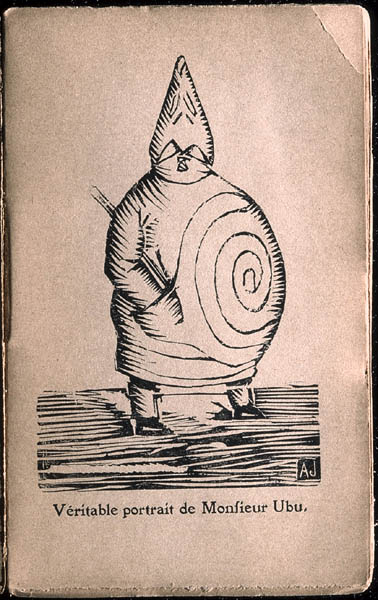
Alfred Jarry, “Véritable portrait de Monsieur Ubu”, woodcut for Ubu Roi, Paris, Éditions du Mercure de France, 1896
It is interesting to note the relation between Ubu’s body architecture, his gestures and the spiral on his robe. The spiral on Ubu’s belly alludes to the qualities of Clinamen – that is, to deviation from a straight line, to deviant movement. It could be the graphic illustration of an atom’s course in the void, an atom that has completed an elliptical orbit and now springs to infinity, deviating from any calculation imaginable.
Ubu, the ambitious major, does not content himself with fate; on the contrary, he follows and asserts his becoming, shaping it in his own way. What matters is how he accomplishes his goals, using base instincts such as passion for crime, an inclination to constant intrigues and all kinds of vices. Can the overgrown Ubu, with his ever-expanding belly highlighted by the spiral design, be a model for nihilist thinkers? Since pleasure is so intrinsically ephemeral, we ‘d better not go without it at all: this could be what Père Ubu has constantly in mind before going on with his next brutal act.
Yet from the point of view of Epicureanism, this is very far from a model of pleasure accompanied by a constant disposition of tranquility, in the sense of the absence of bodily pain and mental anxiety. Thus, one should not confuse real pleasure, as theorized by Epicurus, with the pleasures of the depraved. Within the context of Ancient Greek philosophical schools, Ubu is a Cyrenaic. He is a modern caricature of Aristippus of Cyrene, who taught that the future seems so uncertain that it makes no sense to postpone the moment of a fleeting pleasure. Aristippus reminds us indirectly the logic of Jarry’s hero, through his views that the object of desire and pleasure is irrelevant, and that what matters is just the degree of pleasure and the intensity of the feeling of satisfaction.[iii]
Not only does not Major Ubu, who usurps the throne of the king of Poland, wish tranquility, but he consciously pursues this fleeting pleasure that, for the anti-conformist Jarry, is an ambiguous model / anti-model of himself. In reality, Ubu is the Physics teacher Félix-Frédéric Hébert, in Jarry’s high school in Rennes, whom Jarry used to make fun of, along with his fellow students, in an impromptu marionette theater. The full-bodied professor Hébert incarnates all the negative qualities that young Jarry wanted to criticize, and in the stories of these French teenagers he becomes King Ubu.
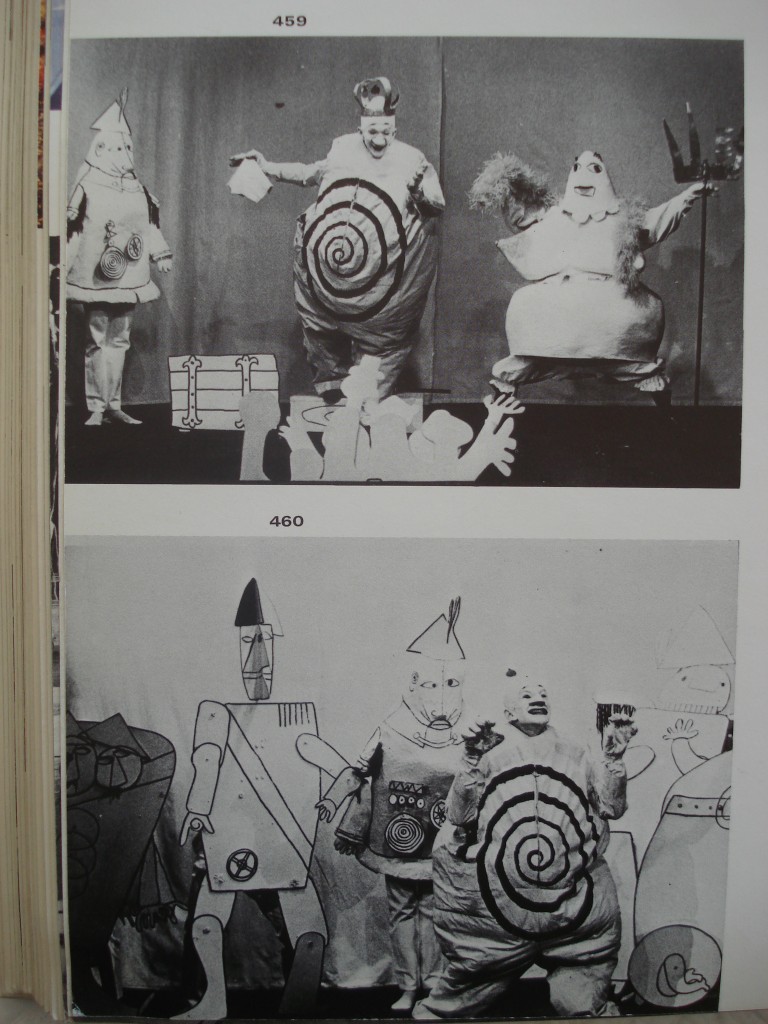
Alfred Jarry’s “Ubu Roi”, stage design by Franciszka Themerson, Dir. by Michael Meschke, Stockholm, Marionetteatern, 1964
Jarry himself refers to the word clinamen, which is the Latin version of Epicurean deviation, in his pataphysical calendar, where it coincides with the month of August. In a less cryptic fashion, the Latin clinamen-deviation is used in Jarry’s 1898 novella Gestes et opinions du docteur Faustroll pataphysicien: Roman néo-scientifique suivi de Spéculations, as a subchapter to describe a painting machine (“Machine à peindre”).
The painting machine is a metaphor of a conscious spatial deviation from a straight line, which “…like a spinning top, it dashed itself against the pillars, swayed and veered in infinitely varied directions, and followed its own whim in blowing onto the walls’ canvas the succession of primary colours…”.[iv] The painting machine, like a “modern deluge of the Universal Seine” is “the unforeseen beast Clinamen ejaculated onto the walls of its universe”.[v] Clinamen, spreading its colors everywhere, could be a metonymic portrait of Jarry, as well as an illustration, in terms of mechanics, of the conditions of the Universe, where atoms are dispersed from a point of departure towards an uncompromised deviation. In Docteur Faustroll, Jarry finds his real model as the inventor of the science of pataphysics, the “science of imaginary solutions”.[vi]
The ornament and the arabesque of Asger Jorn
Although familiar with the literature and the philosophy of Jarry’s discourse, Asger Jorn, who wasn’t a memer of the College but was who was declared ‘Commandeur Exquis of the Ordre de la Grande Gidouille’ wrote in 1961 an article for the Intellectual political movement L’Internationale Situationniste (IS) where he criticized pataphysics for having the qualities of a religion. But his isolated criticism of Jarry’s pataphysics, which was followed by a commendatory note on the part of the publisher, Mr. Guy Debord, cannot possibly annul the influences that nurtured the generation of COBRA (International group of artists and poets, 1948-1951) and the IS.[vii]
An indication of this influence that shows an Epicurean vein in Jorn’s worldview is found in a text entitled “What is an ornament?”(1948), which reveals how close Jorn is to Jarry’s ideas, yet at the same time how much he differentiates himself from them. In this article, he describes “the wave formation matter”, which is the result of the interconnection between the two substances that are active in mutual movement.[viii] The interaction of the different waves through the formalist interpretation can be attributed to the qualities of the arabesque.
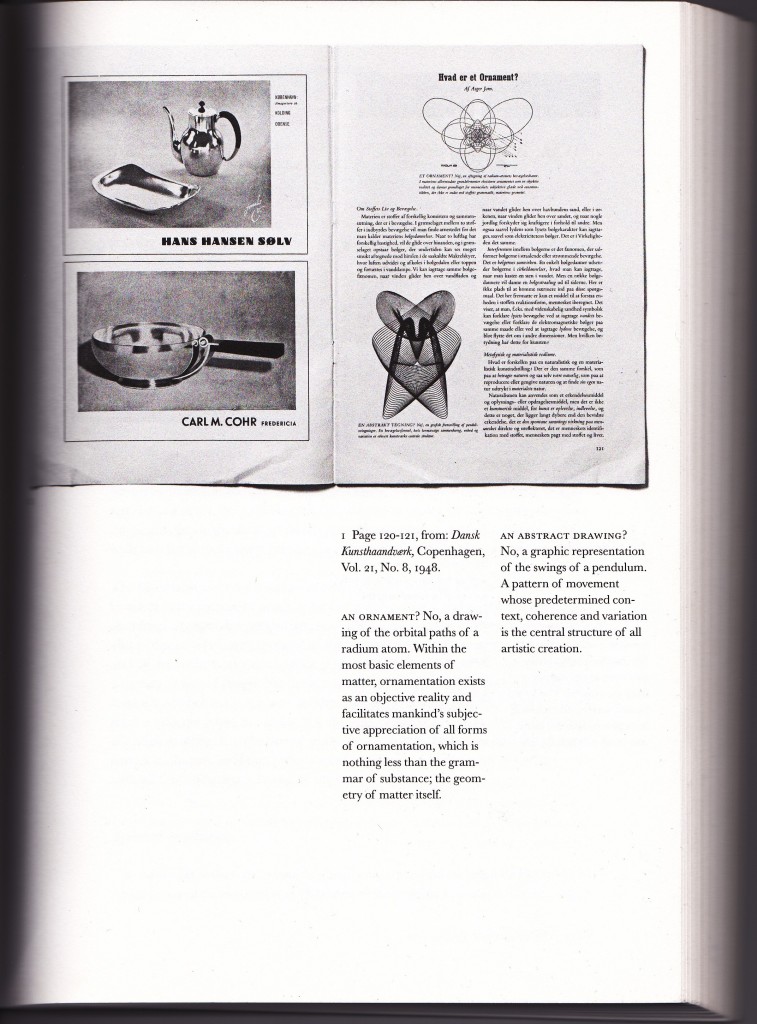
Asger Jorn, page from the essay of Asger Jorn’ ‘What is an Ornament?’ (1948), in Fraternité Avant Tout: Asger Jorn’s Writings on Art and Architecture, 1938-1958, edited by Ruth Baumeister, translated by Paul Larkin (Rotterdam: 010 Publishers, 2011), p.197
From the outset, Jorn gives a summary view of his positions for a “grammar of substance” offered by the philosophy of decoration. More specifically, underneath a picture included in his article, he writes: “An ornament? No, a drawing of the orbital paths of a radium atom”.The physical atom as an ornament and the ornament as a construction that obeys to the laws of physics is an opening to a causality of the deviation of atoms and their reflections towards larger forms, which are destined by nature to move dynamically. The ornament is not programmed to repeat itself unchanged; it changes shape according to the circumstances.
The ingenious Jorn explains colorfully the tendency of matter to result in the organic form of arabesque – similar in this with Lucretius’ clinamen. The shape of the arabesque also comprises Jarry’s gidouille, thus showing immediately an affinity in the treatment of form. Jorn’s descriptions attribute to the arabesques qualities that Epicurus would seek for atoms in the void, spreading everywhere, since anything that moves is destined to take shape, or else to extend linearly as an arabesque in the time-space continuum. At the same time, each arabesque, reacts with other arabesques which have described longer trajectories and “which in turn engage with all that we describe as substances or matter, and of which we only know that there are a myriad arabesque movements – right from the ingenious systems holding atoms and molecules together up to the movement of the planets in space – all circling the solar system’s invisible core”.[ix]
Arabesques can be perceived as the intelligent system of atoms and molecules, and they even explain the movement of plants in space. Accordingly, “we can observe the flowing seas, the evaporation taking place across both land and water, after which it rises to the heavens only to cool once again and condense to rainwater, falling back to the ground so as to join with streams and rivers where the cycle from sea to clouds will start again”.[x] Jorn offers with explicative lyricism the fundamental values of decoration as a life motif. But do arabesques, the quality of movement aside, also have the logic of deviation, as described by Lucretius with regard to the movements of atoms?
Jorn writes: “People rise from their beds in the morning and their pattern of wandering throughout the day describes their own arabesque of footsteps across the earth. They follow the same routes day after day”. And further on: “their footsteps become pathways, which branch out across the terrain and which show where man has left his tracks, and then others go along the same tracks and these become roadways, reflecting the abundance of life – arabesques in man”.[xi] While this description could be attributed to a thinker that sees behind the phenomena visions that repeat themselves identically in time, following a stringent Platonic logic, the answer is finally given by Jorn himself, when he argues that “static forms … have a tendency to become dynamic, because the presentation of dynamic art is the natural way of things”.[xii]
Jorn’s difference compared with Jarry is that the former tries to find a Cartesian acceptance in the dynamic composition of matter, to formalize the Epicurean deviation with the motif of arabesque, although he is no more able to define the limits of this extension. Lucretius expands generously Epicurus’ wisdom, bringing to mind Jorn’s methodology, regarding the traces of arabesques from the small to the grand scale: “Certainly the primary elements did not intentionally and with acute intelligence dispose themselves in their respective positions, nor did they covenant to produce their respective motions; but because through the universe from time everlasting countless numbers of them, buffeted and impelled by blows, have shifted in countless ways, experimentation with every kind of movement and combination has at last resulted in arrangements such as those that created and compose our world…”.[xiii]
Both Jarry and Jorn try to speak, each one in his own terms, about deviation as a fundamental element of free will, which cannot but reflect the Epicurean view of the formation of the Universe. Movements with no connection or movements that deviate from their expected precise recurrence, thus defining what we call contingency, constitute Jarry’s way of philosophizing, through Dr. Faustroll, as well as his nihilistic caricaturizing, through the lame materialist major Ubu.
In the end, if deviation in the sense of declinatio or clinamen corresponds, in terms of social history, to a deviant course, the inclination of which is translated into the subject’s free will, both Jarry, with the blatant destructivity that runs through his writings, and Jorn, with his insistence on an experimental and anarchic creativity, seem to substitute for the claim of an “intelligent design” or the traditional view of God’s omnipotence the subversive qualities of matter. Both expound, though in different ways, a modern-day paganism, compelled by “the presence of a distinct boredom”, going against the supreme will of a god, a doctrine, a predictable existence. Jorn, in particular, advocates“the pure desire for the unexpected, the thirst for surprise… the inclination to difference… the flânerie”.[xiv]
Epicurus’ wisdom is of vital importance for a “deviant” freedom in existential terms. Since all cosmic order springs from this deviation, even the concepts used by the pataphysicians can be moved away from the pragmatist restraint of language, especially if one thinks of Jarry’s exuberant neologisms.[xv] Empirical functions such as a sudden collapse, a violent breakup, a change of course-dislocation, reconstruction or the paradox of love help us, among many others, understand how the Epicurean swerve in physics and philosophy can have an immediate impact on the world of human relations.
[i] Lucretius, On the Nature of Things (De Rerum Natura), translated, with an introduction and notes by Martin Ferguson Smith (Indianapolis & Cambridge: Hackett, 1969), Book II, 216.
[ii] Idid., Book II, 254.
[iii] Despite the similarities between Epicureanism and Cyrenaicism, these two schools constructed very different systems of thought. See Jean Paul Dumont, La philosophie antique (Paris: Presses Universitaires de France, 2003), and W. Windelband-H.Heimsoeth, Handbook of History of Philosophy [Enchiridio Istorias tis Filosofias], Greek translation by Ν. Μ. Skouteropoulos (Athens: ΜΙΕΤ, 1991).
[iv] Gestes et opinions du docteur Faustroll pataphysicien: Roman néo-scientifique suivi de Spéculations (Paris: Charpentier, 1911). I quote here the English edition: Alfred Jarry, Exploits & Opinions of Dr. Faustroll, Pataphysician, trans. by Simon Watson Taylor, Introduction by Roger Shattuck (Boston: Exact Change, 1996), p. 88.
[v] Jarry, Exploits & Opinions of Dr. Faustroll, Pataphysician, op. cit., p. 88-89.
[vi] “Pataphysics … is the science of imaginary solutions, which symbolically attributes the properties of objects, described by their virtuality, to their lineaments”. Ibid., p. 22.
[vii] Asger Jorn, “La pataphysique: Une religion en formation”, Internationale Situationiste 6 (August) 1961, p. 29-32; included in Pataphysics: A Useless Guide, by Andrew Hugill (Cambridge, Mass. & London: The MIT Press, 2012).
[viii] Asger Jorn, “What is an Ornament?” (1948), in Fraternité Avant Tout: Asger Jorn’s Writings on Art and Architecture, 1938-1958, edited by Ruth Baumeister, translated by Paul Larkin (Rotterdam: 010 Publishers, 2011).
[ix] Jorn, “What is an Ornament?”, op. cit., p. 207
[x] Ibid., p. 207.
[xi] Ibid., p. 207.
[xii] Ibid., p. 203.
[xiii] Lucretius, On the Nature of Things, op. cit., Book I, 1008.
[xiv] Asger Jorn, ‘Charme et mécanique, sur le rôle du vandalisme dans l’histoire des arts’, in Asger Jorn “Pour la Forme. Ebauche d’une méthogologie des arts”, Paris, Internatioanle situationniste, 1958. English translation ‘Charms and Mechanisms’, in “Concerning Form”. An outline for a methodology of the arts”, Museum Jorn, Silkeborg, 2012.
[xv] It is interesting to note the deviation searched by Michel Serres in the field of language, when he argues that every language is a unique seed, an original distribution of parasites. He even dares to oppose consonants and vowels in order to convey the necessity of deviation. The ideal example is Ubu’s famous “Merdre” instead of “Merde” at the beginning of the First Act of Jarry’s play. Here is Serres’ argument: “Sometimes winds, breaths, composed together incline toward each other without the intervention of valves or consonants. Oui is a coil, a tress of voice. A bit free, a bit loose, undone, without the anguish of strangulation. Oui without the swarming parasites. Oui in the wind of the Paraclete. Oui in the turbulent tresses of the river. Oui finally works itself loose [se desserre]”. Michel Serres, The Parasite [Le Parasite (Paris: Grasset & Fasquelle, 1980)], trans. by Lawrence R. Schehr (Baltimore, Maryland: The Johns Hopkins University Press, 1982).
SISSV: AN EXPERIMENTAL APPROACH TO THE ARCHIVE OF THE SCANDINAVIAN INSTITUTE OF COMPARATIVE VANDALISM
The entry below is an email exchange that took place after a workshop in the framework of hildegoesasger at Officin (Copenhagen) where Niels Henriksen presented his research on Asger Jorn’s Scandinavian Institute of Comparative Vandalism (SISV) and Ellef Prestsæter together with Nicolas Malevé presented the work in progress of the Scandinavian Institute of Contemporary Comparative Vandalism (SISSV), an experimental art/research project engaging with the archive of the SISV at the Museum Jorn.
Niels Henriksen is a Ph.D. candidate in the Department of Art and Archaeology at Princeton University, USA. He is currently preparing a thesis on the adaptation of archaeological concepts and procedures in Asger Jorn’s book projects and paintings from 1948 to 1965.
Ellef Prestsæter is an independent researcher, artist, and curator. He is a founding member of the SISSV, together with Michael Murtaugh and Nicolas Malevé. He works at the University of Oslo and writes regularly on art and literature for Klassekampen, Vinduet and Kunstkritikk. Most recent publication: The Invention of the Bright Day by José de Almada Negreiros, translated from the Portuguese into Norwegian and Reports from the Gutenberg Galaxy (http://www.obs-osv.com/gutenberg).
Asger Jorn founded the Scandinavian Institute of Comparative Vandalism (SISV) in 1961, shortly after leaving the Situationist International. Jorn published a series of theoretical “reports of the SISV” and planned the production of some thirty volumes of coffee table books devoted to 10,000 Years of Nordic Folk Art. Eventually only a pilot volume on 12th Century Scanian Stone Sculpture was published. An archive consisting of more than 25,000 negatives taken by Gérard Franceschi and Ulrik Ross (commissioned by Jorn) bears testimony to the magnitude of the endeavor.
NH: My first question regards your framing of your intervention this summer with the SISV in terms of a sort of manual for operating the archive. I am interested in the structures you identified in the original archive, and how you chose to engage with them.
EP: When we started working with the SISV archive at Museum Jorn in Silkeborg, the first thing we needed to do was to develop an understanding of how the archive works, to map the relations, conjunctions and affordances[i] of the archival apparatus. There are more than 25,000 negatives in the filing cabinet. They are all ordered according to geographical location. The corresponding contact sheets as well as enlargements are indexed with a code unique to each image. Thus this image of a wooden stool, to take a random example, is indexed as N7-2-29. N indicates Norway, 7 means that the image was shot in the county of Oppland, 2 gives the further geographical specification of the Gudbrandsdalen valley and 29 is the number given to this specific image.
The key to all of this is a document we refer to as the “white binder”. The binder was produced in the 80s by Stephanie Nørgaard, who was given the task of cleaning up the archive and has been an invaluable source of information for us. Interestingly, she told us that in order to crack the code of the index, she would start with Jorn’s published books (where some of the photos were reproduced) and work her way backwards to the photo archive, reverse-engineering the image articulations of the book, so to say … The white binder maps the overall structure of the repository very well. However, it does not encompass all the material remains of the SISV. Working with the images, Jorn would select the images he wanted to use for some purpose and put them in boxes. Later he would order the images in a particular sequence by putting them into albums that served as mockups for the planned books. A large number of images have been preserved in both “states” of ordering: there are more than 50 boxes and a number of albums. The boxes and albums are not stored in the filing cabinet (indeed they are usually stored in a different part of the museum building; our exhibition at the Museum Jorn this summer brought them into proximity with each other as we moved everything into one room). The boxes and albums bear witness to different stages of Jorn’s work with the images, or so it would seem. Each box and album contains a typewritten sheet where someone (Stephanie says it wasn’t her) has duly indexed its contents, adding a brief annotation of the depicted object. N7-2-29 for instance, appears in an album indexed as Modern times. Volume 6. The common people’s art of wooden images and wooden architecture and has been given the following annotation: “Lillehammer Folk Museum, Norway. A stool with three legs, made of a piece of wood resembling a snake. ?+” The question marks multiply in these annotations.
Most of the boxes are indexed with speculations as to what volume of the 10,000 years of Nordic Folk Art series Jorn had in mind for the selection. The word “possibly” occurs very often: “Hunters’ art. Possibly Antiquity volume 1”. The indexing remains hypothetical, a series of speculations. For us there is something attractive about being able to archive according to hypothetical connections (this is typically what you would want to avoid when setting up a relational database). At the same time, these annotations can be seen as problematic in the sense that they have been made with the book project as sole interpretative grid, with the presupposition that all the orderings can be explained with reference to that project.
This raises the tricky question of whether the SISV can be reduced to the Nordic book project only. This is a widespread assumption, held by, for instance by the art historian and former director of Museum Jorn Troels Andersen, who has engaged deeply with the archive over the years and even published six volumes based on Jorn’s maquettes. But what then, do we make of all the images from Spain, France and Italy? Are they not related to the SISV? In addition, the filing cabinet contains 39 albums with images sorted according to motifs. They include images from the SISV repository as well as from other sources (museums etc.) and date from around 1970 (they were taken to the archive from Jorn’s house in Colombes after his death). These images are by no means restricted to the Nordic sphere. Are these orderings unrelated to the SISV project?
NH: I wonder if you think it is possible to conceive of Jorn’s conceptualization of the archive in relation to his proposed publication series of 10.000 Years of Nordic Folk Art in terms of an apparatus and a manual? What would that imply?
EP: Your questions suggest an intriguing reversal: the image articulations based on the photographic repository preceding it somehow working its way into the latter’s structure, reordering it as its operative manual. Interestingly, such a movement, where a particular use of an archive would feed back into it and transform it is exactly what this archive cannot accommodate. It is significant that whereas you can always trace an image back from one of the boxes or albums to the “archive proper” (the filing cabinet) by means of the code written on the back of most prints, it does not work in the other direction. Looking up an image in the filing cabinet will not point you in the direction of its previous use, whether it has been selected for one of the boxes/albums or appeared in books etc. A book such as the one on the stone sculptures of Scania can only work its way back into the archive as a new document, given a unique location in the archive (indeed there is a folder in cabinet 7.4 containing most of the images selected for the book as well as documents specifying their sequence in the book).
On another level, the sequences and selections developed by Jorn do serve as suggestions as to how the images in the repository might be handled. As such they are perhaps better described as examples rather than manuals in the strict sense. Jorn explicitly made clear that his orderings were not definitive or exhaustive. In one of the texts you translated for October magazine, he states that “the publication of the series “10,000 Years of Nordic Folk Art” should be a historic event in itself, in the most proper sense of the term, meaning a temporally limited phenomenon that could soon be replaced by another series, composed in a different way” (Structuralism and suppression, 1967). Also, and even more interestingly (not least for the SISSV!), he ended the 1965 annual report of the SISV (where he announced the temporary closure of the institute) by claiming that the book series “never had been of central importance to the SISV, whose material is primarily meant for other purposes”. In part this may be seen a rhetorical move in the light of the book project’s failure, but I believe there is more to it.
To reiterate, I don’t see the work of the SISSV in terms of creating an operative manual to the archive. Understanding how the original apparatus works was rather the starting point for experimenting with new ways of operating the archive, this time with digital tools. If the strength and weakness of the analogue archive is the rigidity of its structure, a digital archive can perhaps let different orders co-exist in a more flexible and dynamic the way. New articulations can work their way back into the archive and become new structures.
Digitization brings about an archive whose holdings are no longer only addressable at the level of the individual image but also as pixels, histograms, “significant features” or contours detected by different software. All this enables the relationship between parts and wholes to be played out in completely new ways. Here you will find a quick guide, a preliminary manual of sorts, to some of these experiments. I believe our approach can be described as playful, multifarious and experimental, pretty much in the spirit Jorn outlined in a letter to the British anthropologist Francis Huxley in 1969:
“My method is systematically in-konsequent and non-cronologic without other determinations and conclusions except the choice of subject and what eventualli comes out of the puzzle. Some peaces comes to fit together and make groups of relations and perhaps more general visions comes out of it, or perhaps not. So my questions have only the scope to force you to break up my combinations if you see that they are wrong, and put them together in another way if you see a combination, or if you have some pieces to join. It is a game. You don’t know exactly what comes out.“ How would you see the relationship between apparatus and manual? I would be interested in hearing more about your understanding of Jorn’s concept of history as related to a kind of “operative vandalism”.
NH: I very much enjoyed reading about your research on the historiography of the SISV archive. What I wanted to propose by the terminology of apparatus and manual was the idea, which you seem to share, that the archive might have been conceived as a device facilitating other projects and uses than “10.000 Years of Nordic Folk Art.” On the one hand, the failure to preserve the key for the cataloging system, which in any case seems provisional, indicates a lack of interest in the potential for outside use. On the other hand, the deficiency of the cataloging system imposes the necessity on each inroad into the archive of defining an order anew. Thus, each sequence composed from the archive becomes a model for the understanding of the entire repository.
It is for the same reason that I like your shift to the term repository. Because it reflects how this archive—rather than preserving of an abstract system—commands the continuous re-creation of meaning and order with each new approach. This mechanism of continuous re-ordering also implies a superimposition or even eradication of previous attempts, which, to me, gives an indication of what Jorn might have meant by “comparative vandalism.”
Finally, I wonder whether the setup of the archive and its use, as I have proposed to understand it, might also apply to the kind of ‘reader’ experience that Jorn envisioned for the recipients of “10.000 Years of Nordic Folk Art.” On the dust jacket of 12th Century Scanian Stone Sculpture Jorn quotes five different ordering systems, one of which is described as “more or less coincidental.” Thus, the extent of the visual sequences counting hundreds of images, and the inconsistency of their ordering, emulate the characteristics of the main archive repository, only on a smaller scale. This, of course, speaks against the notion of a steadfast division of apparatus and manual, since the “readers” would have to define their own conceptual frameworks, just like the potential users of the larger archive. The idea of an apparatus and a manual is, however, still appealing to me, if for no other reason then because of its implication of active involvement.
EP: I am curious to know how you see the relationship between the image repository and the book series on the one hand, and the paperback reports of the SISV on the other. The connections are by no means obvious! In short, how should we understand the relationship between the material technologies of memory (negatives, paper, inventory, archive etc.) and the theoretical, historical and speculative “superstructure” of the SISV as an engagement with the past?
NH: If you look at Jorn’s “Postscript” in 12th Century Scanian Stone Sculpture, which was published as a pilot for the proposed “10,000 Years of Nordic Folk Art” book series, Jorn frames his project as an archaeology as opposed to a history. He defines archaeology—by contrast to history’s tracing of “actions and events”—as the development of “the most ordinary types” in a stratigraphic overview of “…the homogeneity and variation of repetitions.” In addition to archaeology, Jorn defines his project within a terminology of vandalism, adapted from the literature on the destruction of art. Vandalism denotes the research focus on graffiti, heathen iconography in Christian churches, and folk art, but also Jorn’s “archaeological” approach to that object field. Thus, the definition of vandalism does not distinguish between visual production and interpretation. In that, Jorn’s vandalism reminds me of the Situationist strategy of détournement, described by Tom McDonough as borrowing in equal part from Bertolt Brecht’s Umfunktionieren and Lautreamont’s plagiarism.
The notion of a logic of appropriation posed between deliberate critical re-inscription and anarchic attack on the integrity of authorship and singularity of events, I think, also applies to Jorn’s concept of vandalism. Both détournement and vandalism are based on the idea that the construction of the present relies on the simultaneous creation and destruction of the past. I think of the sequence of 12th Century Scanian Stone Sculpture as a reflection of Jorn’s interest in the inherent destructiveness of history writing, or archaeological excavation for that matter. The excessive repetition of similar motifs in the sequence overreach all pedagogical utility and seem more in the vein of Lautreamont than Brecht. My interpretation of Jorn’s vandalism may seem to some to be too generous in its assessment of the criticality of his project. At the same time as Jorn’s vandalism is full of vestiges from his involvement with the Situationist International, the rhetoric of a specifically Nordic or Scandinavian vandalism or barbarianism suggests the notion of a recourse to a primal origin that dates back to the Cobra years, and which is contradictory to the vandalist archaeology as I have just outlined it.
Further reading:
Asger Jorn: “Postscript to 12th Century Stone Sculpture of Scania” [1965]. October 141 (summer 2012), pp. 73-79. Translated from the Danish by Niels Henriksen.
Asger Jorn: “Structuralism and Suppression” [1967]. October 141 (summer 2012), pp. 81-85. Translated from the Danish by Niels Henriksen.
Niels Henriksen: “Vandalist Revival: Asger Jorn’s Archaeology”. In Asger Jorn: Restless Rebel, eds. Dorthe Aagesen og Helle Brøns (Statens Museum for kunst, 2014), pp. 226-237.
A book about the SISSV project, with essays by Teresa Østergaard Pedersen, Matthew Fuller and Éric Alliez, is forthcoming in 2015.
[i] An affordance is often taken as a relation between an object or an environment and an organism, that affords the opportunity for that organism to perform an action.
COMPARATIVE VANDALISM
Within the framework of my research into Asger Jorn´s writing and thinking I organize public and semi-public sessions with special guests at a variety of venues. The guest´s practice, knowledge, insights, or responses are informative to my research, or steer the direction I take on a particular topic. The sessions also often respond to the context of the hosting institution, or to a specific request. Making the sessions public is a way to share and enter into a dialogue with the audiences.
‘Comparative Vandalism’ was an exchange of thoughts on Asger Jorn’s Scandinavian Institute of Comparative Vandalism. Special guests were Niels Henriksen (PhD candidate at Princeton on Asger Jorn), Ellef Prestsæter (curator of the Scandinavian Institute of Contemporary Comparative Vandalism) and Nicolas Malevé (co-founder of the SICCV) as well as an equally special group of other participants:
Søren Andreasen, an artist based in Copenhagen. Andreasen often makes drawings, etchings and works using a range of printing techniques. He has published several books and written a series of pamphlets. The combination of abstract images and texts about art, its politics and relationship with everyday social situations plays a vital role in his work. He is essentially interested in the way art affects the way we think and behave.
Helle Brøns, a PhD candidate at the University of Copenhagen, Statens Museum for Kunst, and Museum Jorn. Author of Asger Jorn, Copenhagen 2009, “Masculine Resistance. Expressions and Experiences of Gender in the Work of Asger Jorn”, in October: Asger Jorn: A Special Issue no 141, 2012 and “The Shock of the Old,” in Hvad Skovsøen gemte. Jorn’s Modifications & Kirkeby’s Overpaintings, Museum Jorn, Silkeborg, 2011.
Louise Hold Sidenius, who runs Officin – Books, Paper and Prints. Together with Marie Kølbæk Iversen she also runs the Danish editorial project Internationalistisk Ideale. They recently made a print and video display focusing on Jorn´s publication “La Langue Verte et la Cuite” from 1968, known in Danish as ‘tungebogen’ – the ‘tongue book’ and a wall installation with cut-outs from the book generating a new visual narrative.
Jørgen Michaelsen, an artist based in Copenhagen. Michaelsen’s artistic practice includes a variety of media. Underpinning all his work is a preoccupation with the dichotomy between image and language. His publication AUTO. Selected Writings 1993-2005 contains the dialogue “Jorn: Desperate Triolectics Between Mozart and Gadaffi?” Michaelsen’s latest large-scale installation piece was ´Yummy Rooms for Robespierre´ at the Museum for Contemporary Art in Roskilde, Denmark, 2012. Jørgen Michaelsen considers Asger Jorn, as an artist-cum-writer, a highly mutable source of inspiration as well as an interpretative death trap in terms of consensual historicization. See also http://jorgenmichaelsen.net/
Teresa Østergaard Pedersen, an art historian with a background in medieval art and archeology, a former curator at Museum Jorn and currently a PhD candidate. For her PhD she is taking Asger Jorn’s theories and extensive photographic archives on pre-Christian Scandinavian images as a starting point for her re-evaluation of the narrative constituting Scandinavian Visual Culture in the contemporary archeological and art historical fields.
The afternoon of exchange took place on Sunday 6 July at Officin: Books, Paper, Prints in Copenhagen.
THINKING THROUGH MATTER II
Within the framework of my research into Asger Jorn´s writing and thinking I organize public sessions with special guests at a variety of venues. The guest´s practice, knowledge, insights, or responses are informative to my research, or steer the direction I take on a particular topic. The sessions also often respond to the context of the hosting institution, or to a specific request. Making the sessions public is a way to share and enter into a dialogue with the audiences.
‘Thinking Through Matter’ was a talk by myself and Copenhagen-based artist Ferdinand Ahm Krag in the framework of the exhibition ’Asger Jorn – Restless Rebel’ at the Statens Museum for Kunst, Copenhagen. The talk took place Saturday 22 March 2014.
Both my introduction and Ferdinand Ahm Krag’s contribution find their starting point in Asger Jorn´s text ´What is an Ornament?’ from 1948. In this text Jorn states that ornamentation is to be found in all matter, that ornamentation is “the grammar of substance”, “the geometry of life” itself. Illustrations in Jorn’s text include a representation of the orbital paths of a radium atom, and a representation of the earth’s rotational curves within its phases of movement. They serve to stress his idea of the ornament as “spontaneous arabesque”, a type of ‘moving’ and hence dynamic ornamentation that is natural and about organic cohesion.
My text introduces these ideas (a different version though from the session ‘The Grammar of Substance’), and serves as a support to join in Ahm Krag’s thinking about what it means to be ‘natural’ and have a ‘natural’ relationship with materiality in our current times, the age of the anthropocene – the human-made geological epoch. You can find my introduction in the blog entry ‘Thinking Through Matter I’.
In his text ‘What is an ornament’ Asger Jorn describes the ornament as the formal language of nature. Different elements interact in such a way that it becomes ‘ornamental’: think of the patterns the wind and the clouds create. On a micro scale Jorn finds the principle of ornamentation inside the atom. But how far does the principle of ornamentation reach? When does it stop to relate to the human world? In relation to Jorn’s text I am particularly interested to try and locate the outer boundary of the ornament. How far does it stretch? So let us look at the figure of the ornament as a way of assembling a cosmology.
In his ambitious trilogy ‘Spheres’ the philosopher Peter Sloterdijk tries to describe a metaphysical history of “enclosed spaces, utopian or practical pods and domes, real and fantastical atmospheres of ecosystems”. In the first volume he writes: “since the start of the Modern Age, the human world has constantly – every century, every decade, every year and every day – had to learn to accept and integrate new truths about an outside not related to humans.” And he continues: “Every view into the extra-terrestrial spaces provided increasing evidence that mankind is towered above on all sides by monstrous externalities that breathe on it with stellar coldness and extra-human complexity. The old nature of homo sapiens is not up to these provocations by the outside.”
Matter builds up into solar systems that build up into galaxies that build up into clusters and superclusters, and at the very largest scale we find the filament-structures of visible and dark matter – the overall superstructure of the known cosmos. The ornament of matter at the largest scale. Does the natural ornament of matter at a certain point leave the human being behind – and where exactly is this point? And where should we position Asger Jorn in all this? Does he stay within a human centered world?
One could wonder why there are no images of spiral galaxies in Asger Jorn’s text ‘What is an ornament?’ Asger Jorn never leaves planet Earth. It’s from the ground that he looks up and observes the patterns of the clouds and the weather. Today the weather has become climate and the topic of climate change. Climate models always envision the globe seen from outer space. From some thousand kilometers above ground, where there is no gravity. Climate models place us in an imaginary space outside earth and this positioning of ourselves outside earth trying to monitor the climate is made possible by the interior workings of computers. Asger Jorn stays on ground – he stays grounded. But he inhabits the ground in such a way that it seems to be infinite in all directions.
For those of you who have seen the movie ‘Gravity’ – that just won seven Oscars – you will know that the film starts with the following statement: LIFE IN SPACE IS IMPOSSIBLE. ‘Gravity’ is about an astronaut – Dr. Ryan Stone – trying to fight her way out of space and back down to earth. It’s a sort of reversed science-fiction: It’s not about expansion out into Space. It’s about getting back down to earth. Getting grounded and gaining gravity.
It is called ‘re-entry’ when a space-shuttle comes down the atmosphere from outer space. If the film ‘Gravity’ reflects the changing mental state of a culture that now is in the process of a re-entry – a re-entry to the planet and the materiality that makes up the planet, then the question is: what ground are we re-entering? Is it the same ground consisting of the same materiality as when we – metaphorically speaking – took off from the ground in the beginning of modernity ?
If we follow the logic of the film ‘Gravity’ the odd thing is, that it is Earth itself that has become utopia. Not Space. But if it is Earth itself that is the new ´space´ to project our ideals onto, then one might ask: if we are not on earth, then where are we? Apparently we are dealing with this problem of locating where we are?
Marx wrote the following famous words in the communist manifesto: “All fixed, fast-frozen relations, with their train of ancient and venerable prejudices and opinions, are swept away, all new-formed ones become antiquated before they can ossify. All that is solid melts into air.” We are now learning that the ‘air’ Marx mentions is not at all a metaphor. This ‘melting process’ of industrialization and of capitalism has been so profound that it has within the last century led to an epoch-scale crossing of a geological boundary.
If we took off from the planet in the beginning of Modernity we are now in the process of a very troubling and difficult re-entry that brings us beyond modernization. We took off in the geological period called the Holocene – the geological period of time that for 10.000 years provided a safe environmental envelope within which contemporary civilization has developed. Our re-entry to the planet – this re-orientation towards matter, this re-materialization of human thought – is not a re-entry to earth and matter as we know it. It’s an entry to a radically new world. Some geologists have now come up with the term the Anthropocene’. The thesis of ‘the Anthropocene’ suggest that:
“The earth is now moving out of its current geological epoch, called the Holocene and (ii) that human activity is largely responsible for this exit from the Holocene, that is, that humankind has become a global geological force in its own right” – (The anthropocene: conceptual and historical perspectives – Will Steffen, Jacques Grinevald, Paul Crutzen and John McNeill, The Royal Society, 2011)
The starting point of the Anthropocene is set in 1950 by geologists. Jorns text ‘What is an Ornament’ is from 1948 – an interesting coincidence. I would like to bring up one of his interpretations of the ornament again: “The ornament as spontaneous arabesque, which manifests itself as a set of elements within a greater whole. This is ‘moving’ and hence dynamic ornamentation. It is about organic cohesion”.It is my strong feeling that Asger Jorn´s thoughts on the ornament and ornamentation – in some updated version – could be a powerful and necessary contribution to the urgent task of assembling an ecological thought that is not grounded in the Holocene, but instead in the strangely disrupted world of the Anthropocene that goes beyond all former notions of the natural world.
I will now show a video that I recently made and which is partly inspired by Jorns thinking about the ornament. But it also differs a lot from his thinking. My work does not really deal with `organic cohesion`. Instead it is about “digital cohesion”. It is a kind of spontaneous digital primitivism. And the question is – for later discussion – if there still is such a thing as “organic cohesion” that can be used as a model for a materialistic cosmology? How do “organic cohesion” and “digital cohesion” relate to one another?
Ferdinand Ahm Krag, 2014
THINKING THROUGH MATTER (I)
Within the framework of my research into Asger Jorn´s writing and thinking I organize public sessions with special guests at a variety of venues. The guest´s practice, knowledge, insights, or responses are informative to my research, or steer the direction I take on a particular topic. The sessions also often respond to the context of the hosting institution, or to a specific request. Making the sessions public is a way to share and enter into a dialogue with the audiences.
‘Thinking Through Matter’ was a talk by myself and Copenhagen-based artist Ferdinand Ahm Krag in the framework of the exhibition ‘Asger Jorn – Restless Rebel’ at the Statens Museum for Kunst, Copenhagen. The talk took place Saturday 22 March 2014.
Both my introduction and Ferdinand Ahm Krag’s contribution find their starting point in Asger Jorn´s text ´What is an Ornament?’ from 1948. In this text Jorn states that ornamentation is to be found in all matter, that ornamentation is “the grammar of substance”, “the geometry of life” itself. Illustrations in Jorn’s text include a representation of the orbital paths of a radium atom, and a representation of the earth’s rotational curves within its phases of movement. They serve to stress his idea of the ornament as “spontaneous arabesque”, a type of ‘moving’ and hence dynamic ornamentation that is natural and about organic cohesion.
My text introduces these ideas (a different version though from the session ‘The Grammar of Substance’), and serves as a support to join in Ahm Krag’s thinking about what it means to be ‘natural’ and have a ‘natural’ relationship with materiality in our current times, the age of the anthropocene – the human-made geological epoch. You can find Ahm Krag’s talk in the blog entry ‘Thinking Through Matter II’.
What is an Ornament?
Jorn wrote the article ‘What is an ornament?’ in 1948. The text was up to a large extend stemming from Jorn’s critique on the predominant functionalist architecture of the time. Functionalist architecture, roughly said, means that the design of a building should clearly reflect its purpose. In the area of ornamentation this also generally implied that features which are not necessary for convenience, construction, or propriety, were not desirable.
The famous article ‘Ornament and Crime’ by architect Austrian Adolf Loos from around 1910 has been highly influential in the thinking about ornamentation and functionality. Loos regarded ornamentation as the expression of repressed human drives from the subconscious, and believed that we have to transcend these, in order to culturally progress. Asger Jorn, on the contrary, claimed that ornamentation is a fundamental need of human beings, and that a truly functionalist architecture would acknowledge and address this need. As early as 1943 he wrote: “Must it be left to the reactionary forces in our midst to seek to satisfy our irrational need for (and response to) architecture – to our surroundings?” From: ‘On the artistic potential inherent within architecture’ (By the painter Asger Jørgensen)
One of the aspects that Jorn discusses in ‘What is an ornament?’ is what he calls “the tragic history of the ornament in art” – the fact that in the western world, art itself became split into two categories: high art (also classical art) and low art, which Jorn refers to as “folk/banal or spontaneous art”. In relation to this, he states that there are two different interpretations of the ornament:
- The ornament as monumental decoration which seeks to form a finite whole, and becomes static ornamentation.
- The ornament as spontaneous arabesque, which manifests itself as a set of elements within a greater whole. This is ‘moving’ and hence dynamic ornamentation. It is about organic cohesion.
Examples of static ornamentation are: classicist Renaissance art, and various forms of neo classicism.
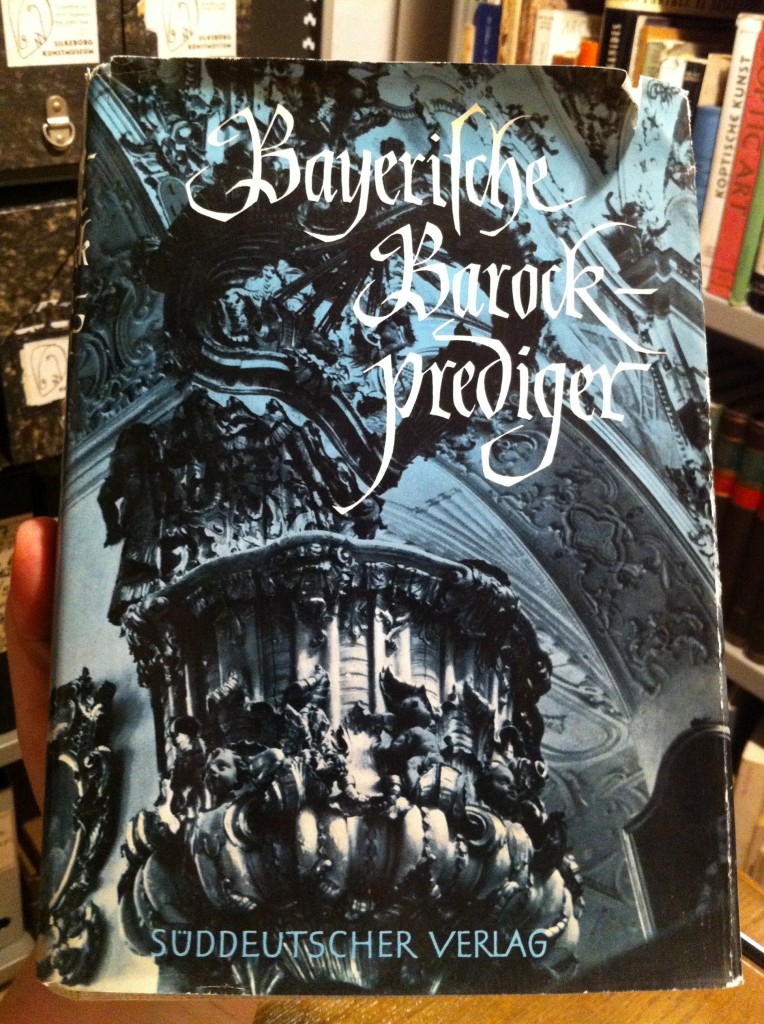
Book cover, 'Bauerliche Barock Prediger', from Jorn's personal library, now at Museum Jorn, Silkeborg
Dynamic ornamentation is to be found in the art forms of all primitive people, art of the Orient, and prehistoric art – until Romanesque monumentalism set in. From that moment on says Jorn, there has been a constant reappearance and disappearance of dynamic ornamentation: Baroque, Rococo, Empire Style, Art Nouveau.
Jorn connects the appearance and re-appearance of both static and dynamic ornamentation to economic and political changes – static ornamentation belonging to classical art, the language of the ruling class, and dynamic ornamentation belonging to spontaneous art, belonging to the people. He also notes that static forms have a tendency to become dynamic because dynamic art “is the natural way of things”.
Ornamentation as the formal language of nature itself
There is however much more to be discovered about Jorn’s text than categorization of ornamentation, or the defence of ornamentation in a critique of functionalism. In fact, the very first point that Jorn makes in ‘What is an ornament?’, is that “Matter consists of substances in motion that have different composition values and consistencies. At the interface between two substances engaged in mutual motion, we find the catalyst for that which we describe as the wave formation of matter.” Think of wind-clouds, wind-sand, sound-light etc. He importantly adds that “this cohesion that exists within the reaction forms inherent in different substances, includes that of mankind.” Jorn illustrates the idea with several images.
The first one he provides with a long caption saying: “An ornament? No, a drawing of the orbital paths of a radium atom. Within the most basic elements of matter, ornamentation exists as an objective reality and facilitates mankind’s subjective appreciation of all forms of ornamentation, which is nothing less than the grammar of substance; the geometry of life itself.”
Jorn’s caption with the first image is: “A Flower? No, a representation of the earth’s rotational curves within its phases of movement. In every aspect of matter from the smallest atom to the whole universe, we find the same pattern of movements as those created, not just flowers but mankind itself. Everything is reflected within everything else.
The second image shows a cross section of the human muscle with right next to it, a map of a town in the Middle Ages. The third images says ‘Australian sand decoration’.
Another article (‘Levende Cultuur’ / ‘Living Culture’) by Jorn, which art historian Graham Birtwistle brings up in his publication ‘Living Art’, starts out in a similar way. Just like in ‘What is an Ornament?’ which was written only a year before, Jorn discusses the arabesque, defining the arabesque as “the expression of movement on all levels”. To Jorn, the arabesque (ornamentation) is the formal language of matter itself. This notion of the arabesque is part of Jorn’s argument for the unity of all life. He says: “All that we know of life is that it is organized movement. All that exists and lives is in movement and forms arabesques in time and space. These arabesques are completely in themselves and yet at the same time they become involved with other arabesques and thereby form organisms; these, in turn, are part of still larger movements which are taken up in that universal movement which we call matter.”
Jorn’s theory of materiality
The fact that Jorn in both ‘What is an Ornament’ and in ‘Living Culture’ starts out defining the ornament as “the grammar of substance, the geometry of life itself”, is indicative for how much the examination and negotiation of the relation between the materiality of the art work and its discursive meanings, between matter and mind in general, meant to him. These issues were of crucial importance in Jorn’s practice. I will discuss his materialist(ic) attitude to life, and would first like to mention art historians Helle Brons and Graham Birtwistle, as their writings which have been very informative to this.
Jorn’s theory of materiality is inspired by thinkers such as Karl Marx, Susanne Langer, Gaston Bachelard, and Niels Bohr – all of whom emphasized – in different ways – the role of physical matter in human thinking. Despite the fact that Jorn was also very critical of some of their ideas, they built an important basis for his own thinking, or re-thinking of matter. This includes thinking about art not as something derived from an ideology or world-view (as Marxist art theory and aesthetics often suppose) but thinking of art as the direct expression of an attitude to life, and as belonging to the fundamental level of work and production. At the basis of his thinking is also the relationship between the visual, the material and the semantic (On an artistic level this means that Jorn’s aim was not a purely visual or material art, but “a recognition of these aspects as meaningful in itself before the discursive level”, as Helle Brons puts it in her paper ‘Material Meanings’), and not in the last place it also includes the thinking of the agency of material matter, the idea that the material world cannot be seen as passive, pre-shaped objects waiting for active subjects to observe and describe. It has its own agency and is constituted partly by its own force and partly by the way we perceive it.
In ‘What is an ornament?’ Jorn expresses this idea the following way: For the materialist artist, “human thought processes are instigated by the substances themselves, and are synonymous with the reaction form which these substances have, because thought (…)cannot avoid the natural laws pertaining to matter. For the material artist, nothing (not even thought processes) can be immaterial in the deepest sense of this word.” In another text, ‘Magic and the Fine Arts’, Jorn also speaks of the identification with things, the identification with matter, when he discusses the importance of play in art and life, and defines play as “the fundamental element in art, the unconscious active enjoyment of life through play with matter, with colours, tones, clay, words etc. (…) Play is not consciously directed to any goal but is a delight, an identification, with things themselves.”(see Birtwistle, p. 76).
Graham Birtwistle discusses the historical roots of Jorn’s ideas on matter at length, mentioning many more names then Marx, Langer, Bachelard and Bohr. Of importance to Jorn’s thinking, at the time of ‘What is an Ornament?’, are for instance also the writings of Erik Lundberg, ideas that Jorn of course adapted. Lundberg’s writings made Jorn think about a new, different way to read pictures, a more ‘simultaneous’ way. Lundberg mentions Persian art and architecture as example of a wholeness that is achieved in a way different from logical construction or accumulation (Gestalt, an immediate coherent whole). These ideas built for Jorn a starting point for a new materialistic theory of unity in art and design, a topic that he also addresses in ‘What is an Ornament?’. In the very last paragraph, where he speaks of the importance to involve artists in the design of working environments, Jorn says: “what is needed here, is nothing other than life, a living environment, social living, a living rhythm of work, a meaningful cohesion to life and a real purpose to one’s work.”
Birtwistle also goes into the influence of nineteenth-century Swedish poetry and other nineteenth-century (Romantic) thinkers on Jorn’s view of (material) life as essentially harmonious. Jorn: “nature, in distinction to class-society is not static or determined by conflict or dualistic but quite the opposite: it is dynamic and harmonious.” (Birtwistle, p. 61) summarized Jorn’s perspective the following way: “Man’s original sense of unity with animal life has been changed to enmity as a result of class-society and its warped values, so that the concept of animality has come to be associated with diseased and decadent human actions rather than with authentic natural values”.
Romantic thinking also led Jorn to reformulate the idea of realist art. In ‘What is an Ornament?’ he states that “the materialist acknowledges that as a human being he is part of the materials and substances, can not be separated from nature.” Consequently, the naturalist artist “tries in vain to transform canvas and oil into (for instance) a lifelike street by trying to conceal the true nature of the material he is using” whereas for the materialist artist, “a line is the track a certain substance leaves behind as it passes another substance.” Obviously, Jorn sees another task for true realist art than to depict the world as we see it in a one-to-one, ‘scientific’ way. Art has a different task, and is able to create a full or even fuller relationship with the world by incorporating subjectivity and romanticism. Jorn (in Birtwistle): “our definition of art as the expression of mankind and his interests, as the expression of subjectivity, simply means that we must see romanticism as the natural and the only genuinely realistic art, because it issues from the subjective, from the needs of mankind …”. Jorn however made clear that this is not about “the hysteria of individualistic romanticism”, but as Graham Birtwistle phrased it: “Jorn invests ‘romanticism’ with his own conception of value, he uses the term to point to the value of a more immediate, undifferentiated kind of experience in distinction to reflective and scientific thought …”
New materialism and post-humanism
In ´What is an ornament?´ Jorn clarifies what it means to be a materialist artist and states that “the materialist acknowledges that as a human being he is part of the materials and substances, can not be separated from nature.” With remarks like these, Jorn’s approach to substance and the material world at times seems remarkably non-hierarchical. This attitude is not only expressed in words, but also in his works, be it in the way he dealt with the materiality of the work, or with the subject matter.
In Jorn’s view, man is not only part of the organic world, man is also an animal, and “subject to the laws the whole organic world has in common.” This rejection of a pure humanist perspective, the idea that we stand above the animal world because we are rational, had much to do with the direct experience of World War II. Jorn, and many of his fellow artists at the time, felt that the experience of (two subsequent devastating) wars had proved this idea to be false. Jorn believed that there is an animal side in humanity that can’t be controlled and also doesn’t want to be controlled.
This doesn’t mean that Jorn didn’t distinguish for instance between man, and nature. He in fact devoted a great deal of attention to the relationship between nature and culture. In his text ‘Luck and Chance’ he writes: “Nature is a subject and has created and evolved itself from within. Nature has no hands and cannot put anything together. But the human being can.” (‘The Natural Order and Other Texts, trans. Peter Shield, London: Ashgate, 2002). In ‘Magic and the Fine Arts’ he even speaks of the superiority of humanity, stating: “It is the task of science to extend our knowledge but it is the task of art to create sensory experiences which answer our needs to form and cultivate the material characteristics we like. It is the capacity to conduct this process ourselves which has made humanity superior to all other animals, which must exist simply in the acceptance of the conditions given them by an inexorable nature.”(Birtwistle, p. 74)
Jorn emphasized that art is not a representation, a mirror, of nature, but that it changes matter, and hence is a direct transformation of nature. Good art, according to Jorn, changes matter in such a way that it becomes more advantageous for humanity, and cultivates the best characteristics in man by its ability to affect and stimulate people. In Jorn’s text ‘Luck and Chance’ it also becomes obvious though, that the fact that man can create tools, and form and cultivate material, transform nature into culture, doesn’t necessarily lead up to overseeable future scenarios. Jorn writes:
“(…) The human being’s changing of natural forms and natural sequences has evolved with incredible speed, and will result in nature, as it functioned before human intervention, being replaced by a new nature.” And a furtheron he says: (…) This utilization of the tool is the point of departure for human art, culture and technique, and creates an opponent relationship between nature in and around us and our wider modes of action. We came into conflict with the whole order of nature.
I would say though that Jorn himself definitely lived up to his own ideas on materiality and his ideas on a new type of ‘realism’ in art (that is more in synch with the ‘natural’) while re-building two small ruined houses that he bought in the municipality of Albissola, Italy, where he lived on and off from the mid 1950’s to his death in 1973. Here, he put his idea of ‘a living art’ into practice, resulting in a situation in which art, architecture and nature merge into what Guy Debord came to call Jorn’s “architecture sauvage” (wild architecture).

House Museum Asger Jorn, Albissola Marina, 2013. Courtesy: Comune di Albissola Marina/MuDA Museo Diffuso Albisola
In relation to this Graham Birtwistle beautifully writes: “In Jorn’s theory, art, poetry, play are firmly rooted in materialistic values but they are described in terms of heightened and intense subjectivity, and it is precisely in this that Jorn locates the social effort of art. (…) Inspiration and enchantment mean for Jorn that external conditions are in tune with our physical and psychic needs; this, the cultivation of man’s relation with life, is ‘the natural goal of all art’ and without this inspiration the earth becomes ‘a vale of tears’. (…) From the energy and vibrancy of life he derives a ‘moral’ imperative for ‘living art’ and ‘living culture’ and offers this as an authentic materialist perspective on the significance of art for society.”
I would like to link Jorn’s eye for and celebration of “the vibrancy of life” to contemporary thinking about materialism. Philosopher Jane Bennett for instance stresses the urgency to rethink “the idea of matter as passive stuff, as raw, brute, or inert” in her publication ‘Vibrant Matter – a political ecology of things’ from 2010. Vitality, the key word in her book, is explained by her as “the capacity of things – edibles, commodities, storms, metals – not only to impede or block the will and designs of humans, but also to act as quasi-agents or forces with trajectories, propensities, or tendencies of their own.” In the book she challenges the notion of a world divided into ‘dull matter (it, things)’ and ‘vibrant life (us, beings)’, and points at the vitality of matter and the lively powers of material formations, such as the way omega-3 fatty acids can alter human moods or the way our trash is not “away” in landfills but generating lively streams of chemicals and volatile winds of methane as we speak. Bennett advocates a revision of the classical notion of ‘ecological’ needs. We should no longer focus on for instance stable interdependencies between species, but think of ecology (and consequently of politics) in a more ‘vitalist’ sense that de-privileges humans.
In her recent paper ‘Material Meanings’, Helle Brøns points at a link between Jorn’s conception of matter and theory formulated by contemporary “New Materialisms” and especially that of physicist and feminist theorist, Karen Barad. Like Jorn, says Brøns, “Barad also builds her theory on Niels Bohr’s work. Both Jorn and Barad, describe a world where objects and subjects – matter and meanings – co-emerge into a unitary field of existence. As Barad puts it “We are not outside observers of the world. Nor are we simply located at particular places in the world; rather, we are part of the world in its ongoing intra-activity.” Jorn similarly imagines: “a plastic world picture which includes and explains all the elements of nature in a unity of time and space in unceasing transformation, where constants are only metamorphoses.“”
Our dealings with matter and processes of materialization, our divisions between the human and the world – between subject and object – have had serious consequences for our actual (which is to say ecological) world. Or, to stay closer to Jorn’s vocabulary, our capacity to shape matter has indeed resulted in “nature, as it functioned before human intervention, being replaced by a new nature”
Jorn’s ‘new nature’ is currently described as no less than a whole new geological era, the antropocene. In the blog entry ‘Thinking Through Matter II’ Ferdinand Ahm Krag talks about what it means to have a ‘natural’ relationship with materiality in this human-made geological epoch.
THE GRAMMAR OF SUBSTANCE (II)
Within the framework of my research into Asger Jorn´s writing and thinking I organize public sessions with special guests at a variety of venues. The guest´s practice, knowledge, insights, or responses are informative to my research, or steer the direction I take on a particular topic. The sessions also often respond to the context of the hosting institution, or to a specific request. Making the sessions public is a way to share and enter into a dialogue with the audiences.
‘The Grammar of Substance’ was a talk by Canadian artist Shannon Bool (lives and works in Berlin) and myself in the framework of the exhibition ‘Shana Moulton – episodes from Whispering Pines’ at Nieuwe Vide, Haarlem. The talk took place on Sunday 16 March 2014. In the blog entry ‘The Grammar of Substance I’ you will find a brief description of Jorn’s text ‘What is an ornament?’ (1948). In her contribution to the talk, Shannon Bool looked at this text from the perspective of the discussion of high and low of in the late 1940’s, and then makes the jump to today, where “Jorn’s categories of ornamentation have merged and artistic strategies require the skills to extract ornamentation from functionality.” Bool also specifically discussed Shana Moulton’s strategy of synthesizing contemporary banality, and specific objects as “escape routes” or catalysts.
Style Confusion and the Psychology of Hoarding
What is most striking to me about Jorn’s text ‘What is an Ornament’? is the way that the text seeks to define ornament from a descriptive or functional viewpoint, but outlines a more universal, or even cosmological description of how ornament pervades the natural world, on the level of physics, wavelengths, and geography. It encompasses both macroscopic and microscopic examples of natural phenomena that act as a sort of blueprint for the human’s need to ornament.
I am an artist who works with some specific aspects and examples of ornamentation, often by subverting the context of cultural information or using unlikely material processes to paradoxically take a deeper reading into surface). Hence, I am primarily interested in some of the ways that Jorn focuses more on the idea of ornament as a way of existing in the world (i.e. his definition of a materialist artist) rather than an anti-modernist defense of specific ornamental forms. It also interests me to see how Jorn takes a probing look at some of the pitfalls of the functionalism of his time. In this respect, he takes a broader, sociopolitical look at the development of functionalism as the downfall of ornament and uses the birth of modernism, or the period just before WWI and outlines a Style Confusion Period as paving the road for functionalism.
I am struck by Jorn’s discussion of “style confusion”, his critique of the multitude of “isms” that emerge in the post war period “cubism, fauvism, futurism” etc, and how he views the avant-garde as inauthentic. He credits the increasing tempo of avant-garde movements in creating a permanent conflict with spontaneous arabesque forms that culminates into the dead end of functionalism. This is an interesting point when one thinks of the “spontaneous arabesque” forms that the avant-garde utilized or even props of these movements. For example the collection and appropriation of ‘primitive’ forms (such as harnessing the energy of primitive masks in cubism), primitive impulses (embracing the transformative energies of war and destruction in futurism) and primitive behaviors (as in “going native” in Fauvism).
As I will later point out, this aspect of appropriating spontaneous arabesque is reflected in contemporary use of ornament, just as original sources are explored, or emptied out consumerist examples are explored. This is also a very present aspect in the video works of Shana Moulton.
In ‘What is an Ornament?’, Jorn outlines in functionalism: “Instead of placing emphasis on the actual function of an object, the functionalists became more concerned with the definition of function, instead of placing emphasis on getting things to actually function, more importance was placed on purely exterior matters-to be able to demonstrate exactly how objects functioned. Functionalists saw the demonstration of an object’s function as being synonymous with the object’s beauty and, thus, the object’s practical aesthetic became the most thoroughly applied rationalistic aesthetic that had ever seen the light of day in the history of mankind.”
Then Jorn indicates how functionalism misunderstood the problem: “The functionalists bade adieu to the style confusion syndrome by apparently distancing themselves from any conscious attempts at creating styles and techniques. They accepted the fact that it is impossible to set out deliberately to develop a particular style. Style is something that emerges naturally. It must be allowed to emerge naturally. That’s why the functionalists forgot all about style, because of this quite correct approach, the functionalist style then emerged. But what kind of style was it?”
Here Jorn describes the crisis of surface decoration that occurs around the birth of modernism. For me, an interesting aspect of functionalism is precisely this avoidance of style, which places then almost fetishistic focus on certain surfaces, which are not per se “decorative” but carry a tremendous psychological weight. It is almost as if an avoidance of what is “primitive”, or any remnants of “spontaneous arabesque” results in an even more atavistic reality.
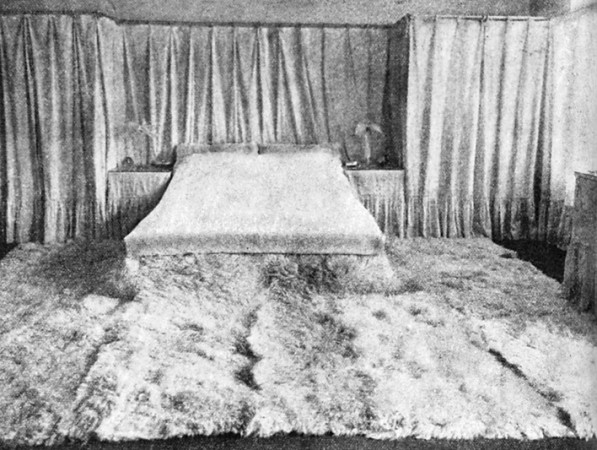
Adolf Loos, 'Schlafzimmer meiner Frau: Weisse Tünche, weisse Vorhänge, weisse Angorafelle', 1903. Photographer unknown.
My favorite example of this is an anonymous photo that was taken in 1903 of the room that Adolf Loos designed for his new wife Lena in the apartment that he completely renovated before they were married. The photo, which can only be found in low quality in an Art periodical from Vienna of that year, is titled: “Schlafzimmer meiner Frau: Weisse Tünche, weisse Vorhänge, weisse Angorafelle.” It shows a room completely devoid of furniture or decoration, covered in white materials.
Most strikingly, an angora carpet covers the floor of the room and culminates between the beds two mattresses. The room is a great example of how avoidance of decoration can create atmospheric effects that parallel those of Jorn’s “spontaneous arabesque”, in a sort of identification with and empathy towards a constructed space. This space is intended to precisely reflect an inner, organic experience just as “spontaneous arabesque” emerges from an attunement to nature, or from “life’s intrinsic patterns” as Jorn deems.
While I understand Jorn’s resistance to the functionalist’s agenda of counter ornamental purification, I can also conclude that at the time his essay was written (1948), many examples of its functionalism can be viewed as decorative today. Looking at this image more than six decades later, it could strike us as decorative, as sort of an adaptation of spontaneous arabesque, because of subtle details such as the sweetness of old fonts, or even the nostalgia they deliver.
My point is that where Jorn leaves us in 1948, functionalism evolves into several styles (Postwar practicalism, Scandinavian minimalism with a focus on natural materials, and then the bright colourful explosion of Italian functionalism. I believe, alternatively, that in it’s most basic sense, functionalism provided us with a perfect shell to be slowly filled with the abounding consumerism, mass media and an overwhelming amount of ornamentation which has been appropriated, sampled and referenced from original sources and for the most part, emptied out of its original contents.
The caption Jorn provides reads: “THE DYING SCREAM OF FACADE ORNAMENTATION. Marketing – it says on the flag blowing in the breeze above this monstrosity of steel, cement, and neon lights. Functional Ice. – This is how far we have gone with our ‘rational’ exploitation of the facade. This is how low we have sunk in terms of artistic culture.”
In a contemporary context, there are a few examples of the power of focusing on inanimate objects, displays and ornaments, where they are given agency that doesn’t bring us as viewers to the returned innocence of “spontaneous arabesque”. It rather brings us to a more contemporary version of materialism which balances the cosmology of spontaneous arabesque with an ironic distance or skepticism of consumerism. The examples I would like to briefly outline are in Shana Moulton’s videos, in David Lynch’s TV series ‘Twin Peaks’ and in a few brief examples of the films of Douglas Sirk. I would like to title these examples:
The Psychology of Hoarding Spontaneous Arabesques
In Shana Moulton’s videos, the character of Cynthia surrounds herself with knick knacks in a domestic setting that range from the holy artifacts to the most mundane thrift store finds. The passage of time has almost equalised the auras and symbolic values of these references. For example, in ‘Whispering Pines #4′ Cynthia’s setting features a copy of Mondrian’s evolution tryptic, which in this setting, hanging over a banal eighties leather sofa, looks like decoration for a medical office.
Cynthia herself, wears a housedress normally worn by women over 65 who can be found in the deepest, darkest realms of domesticity. Cynthia’s housedress however, matches her to Mondrian’s channelling and enlightened figures. This non-hierarchal choreography forms a world where Cynthia can attempt to balance the overempathic activity of her senses. This balance ruptures into ecstatic moments when she emphathises with what we could call the “spontaneous arabesque” of certain materials or objects.
In the contemporary mix-mash of powerful symbols mixed with emptied out consumerism, Cynthia even subverts the functionality of prosthetic devices and wellness knick knacks. She uses them as raw material to build objects which emulate the earnest origins of „spontaneous arabesque“, such as a ceremonial staff she builds from massage tools and brings to ‘The Antiques Roadshow’ in ‘Whispering Pines #4′.
Other mundane objects are used in rituals that seem to balance Cynthia or lend her healing powers. In another video, ‘Sand Saga’, decorative sand, an ingredient bought in craft stores mostly to make simple candles or pour in layers into a glass is diverted by Cynthia’s higher power creature. The creature makes a sandpainting of a reproduction of a navajo blanket, that Cynthia lies on and receives a healing session, where her higher self uses a pseudo-modernist knick knack to cleans her chakras.
There is perhaps a critique here: everything references the earnest roots of indigenous healing, but symbols and ceremonies are improvised and misguided through the outsourced nature of Cynthia’s objects. She doesn’t quite understand her surroundings that she so deeply identifies with, referring back to Jorn’s idea that “(…) the materialist acknowledges that as a human being he is part of the materials and substances and can not be separated from nature (…)”.
I am lead to what one can read as Cynthia’s existentialism; her inability to separate herself from her surroundings due to her vast reserves of empathy that she seems to recharge herself with when she connects to them. In ‘Whispering Pines #9′, this culminates in her mistaking her Avon Foot bath with a valuable Zuni Vase and even making a trip to the Antiques Roadshow herself. In the end, she takes solace in the object’s absurd healing functionality and literally regenerates herself with a footbath.
When getting to know Cynthia, Moulton’s portrayal of her inability to separate from, or to use the objects of a mise-en-scene as catalysts of affect, can be linked to two references: David Lynch’s ‘Twin Peaks’ and the films of Douglas Sirk.
In relation to Jorn’s ideas of not separating with nature and “spontaneous arabesque” (and a materialist identification with nature), it is almost as if the contemporary impossibility of being “natural” becomes a point of stress or trauma. The quirkiness of ‘Twin Peaks’ is also, like Cynthia’s world, initiated by characters who over-emphathize with inanimate objects (such as the lady of the log), or painstakingly hyper decorated sets which have the opposite effect of Cynthia’s surroundings, as they communicate a subtle doom, but this doom seems to correlate to Cynthia’s new age sensibility. In points of crisis, the activation of setting and ornaments that inhabit it are activated to show this dark imbalance. For example, in ‘Twin Peaks’, episode 14, a brilliant long pan is used to show the suffocating atmosphere of the knick knacks and ornaments of the Palmer Family’s living room which culminates in the murdered Laura Palmer’s cousin Maddy (played by the same actress who wears a brunette wig) announcing her need to leave Twin Peaks.
Later in the episode we return to the living room, where Mrs. Palmer has been drugged by Mr. Palmer (possessed by Killer Bob). The living room becomes a platform for the invocation of the Pale Horse.
The following scene has Maddy murdered in the same living room. The final blow is delivered when she is thrown headfirst into the pastoral painting that the living room scene begins with. Here is Mrs. Palmer, the quintessential existential housewife, trapped in her domestic reality, like Cynthia, but without any new age healing mechanisms.
Like Cynthia, the characters in ‘Twin Peaks’ almost psychically bond with their synthetic environments and artifice evokes empathy. A post-Jorn reading of this, could connect the environment of Twin Peaks, and of Cynthia’s interior contructions, as attempts to balance multitudes of reference, to create a sort of universe where the unbalanced patterns of nature are renegotiated.
Perhaps one of the greatest figures who activated the sensibility of “unnaturalness” is the filmmaker Douglas Sirk, whose films were made not long after Jorn’s text was written. Here the film theorist Tom Ryan writes about Sirk’s use of set:
“Most compellingly of all, forces of repression are signalled through Sirk’s imagery. In his work, mise en scène is as crucial to meaning as narrative form, his often baroque visual style pointing to the ways in which human aspiration is largely determined by the tenor of its surroundings. Homes that are supposed to be havens start to look like prisons as the decor comes to dominate the compositions. Objects that are supposed to be items of support actually seem to be taking over the characters’ lives. Their traumas become the logical extensions of the workings of the world around them.” See also http://filmstudiesforfree.blogspot.nl/2010/09/in-authenticity-douglas-sirk-and.html
In Sirk’s film ‘All that Heaven Allows’ a rich widow (also wearing an existential housedress) tells her spoiled, materialist children that she plans to marry her bohemian gardener.
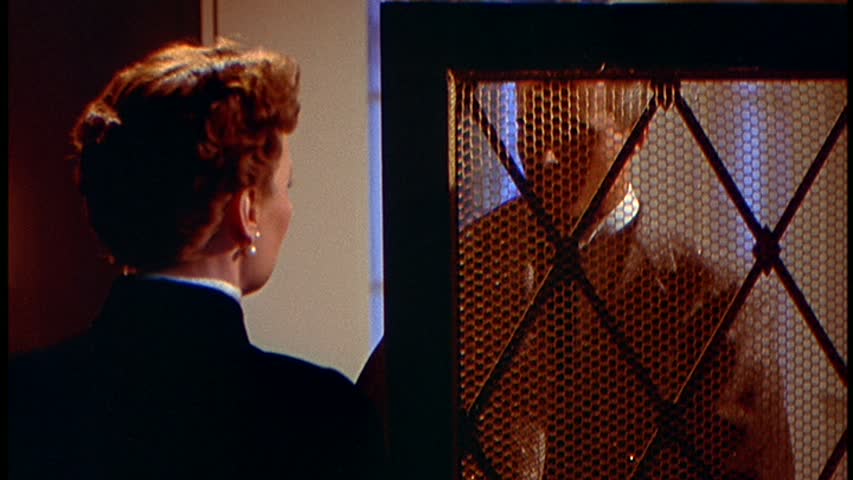
Douglas Sirk, ´All that Heaven Allows´, still. A paravent dividing mother and son resembles a prison.
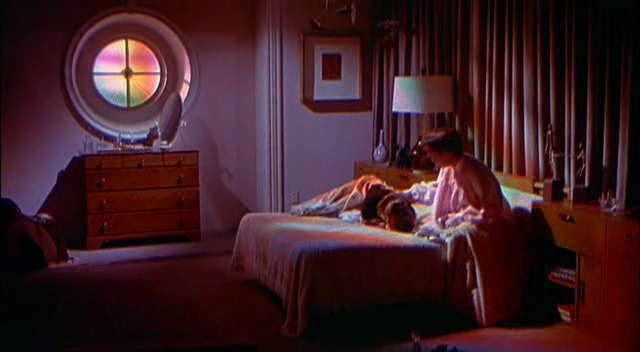
Douglas Sirk, 'All that Heaven Allows', still. The daughter’s bedroom, features a pre-new age window that channels light into a prism. But instead of providing healing properties, the prism’s colourful lights are projected onto the characters and illuminate their misery in a colorful rainbow.
Like Cynthia’s charged settings, Sirk invokes the power of decoration from the point of view of imbalance, of the impossibility of an authentic “materialist” reality, but how aspects of “spontaneous arabesque” can be channeled into novel catalysts of affect.
Shannon Bool
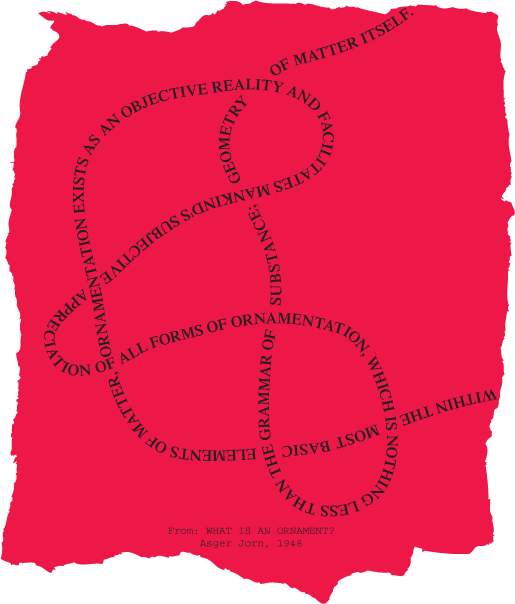
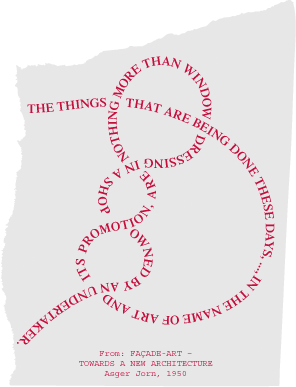
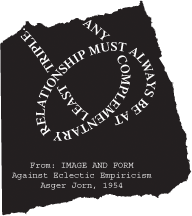
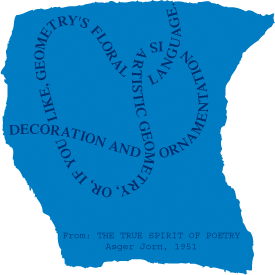
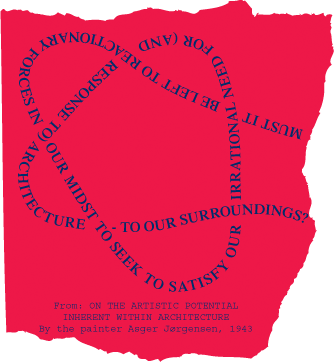
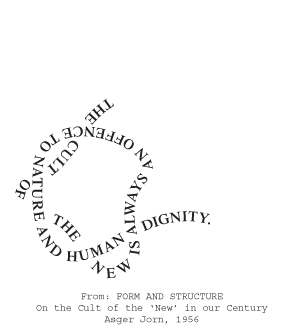
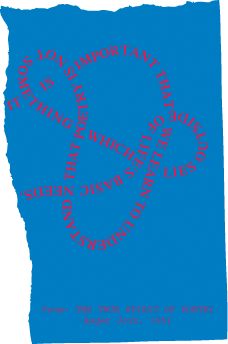
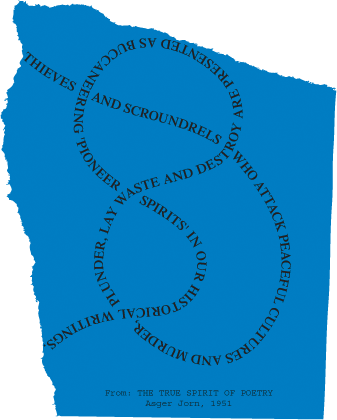
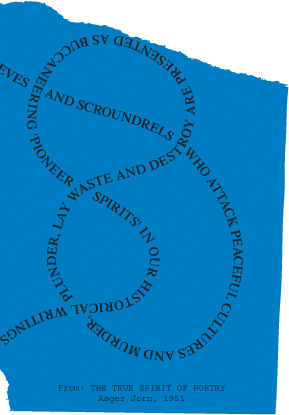
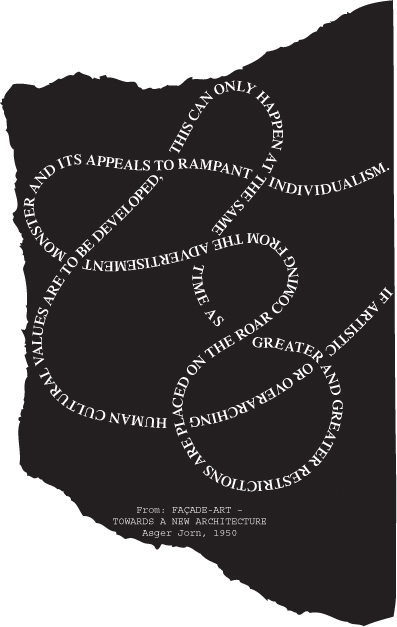
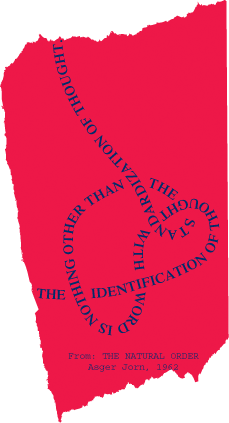
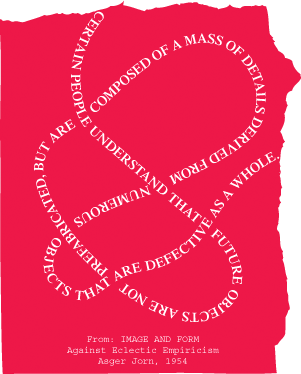
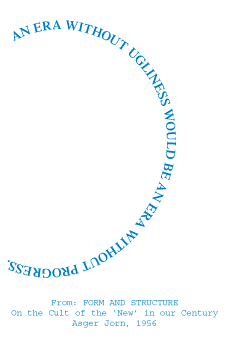
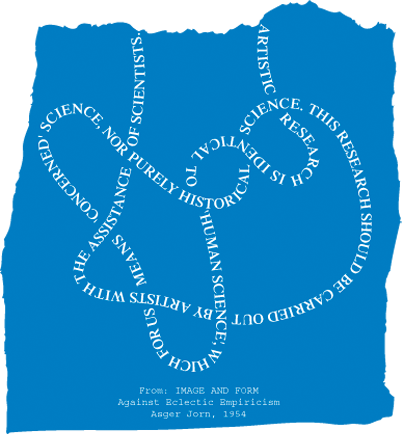
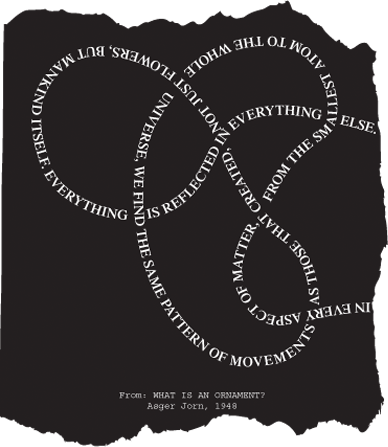
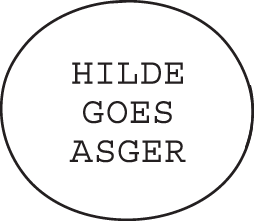
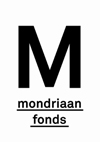
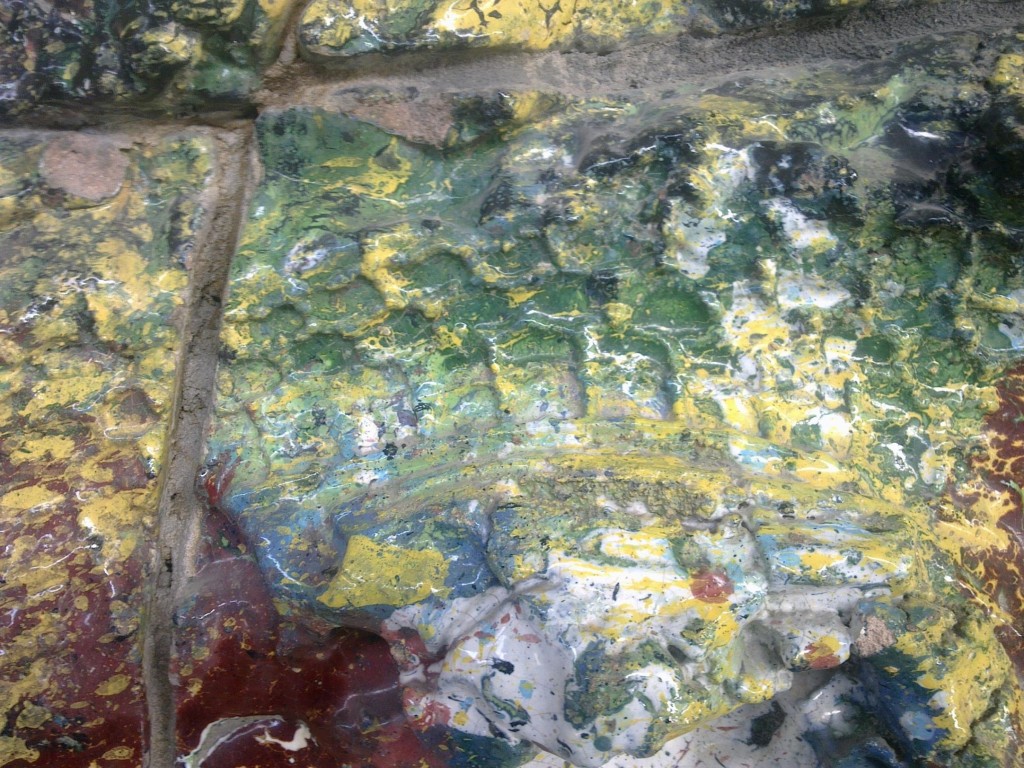
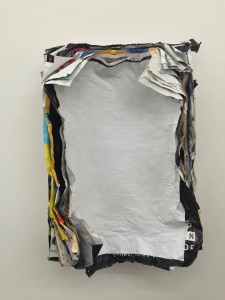
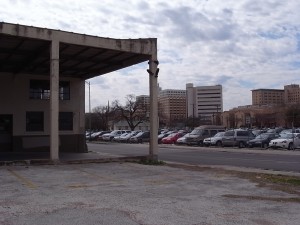
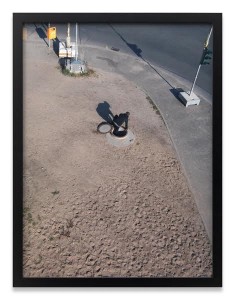
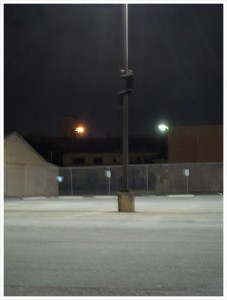
![775t[1]](https://www.hildegoesasger.org/wp-content/uploads/2015/07/775t1.jpg)
